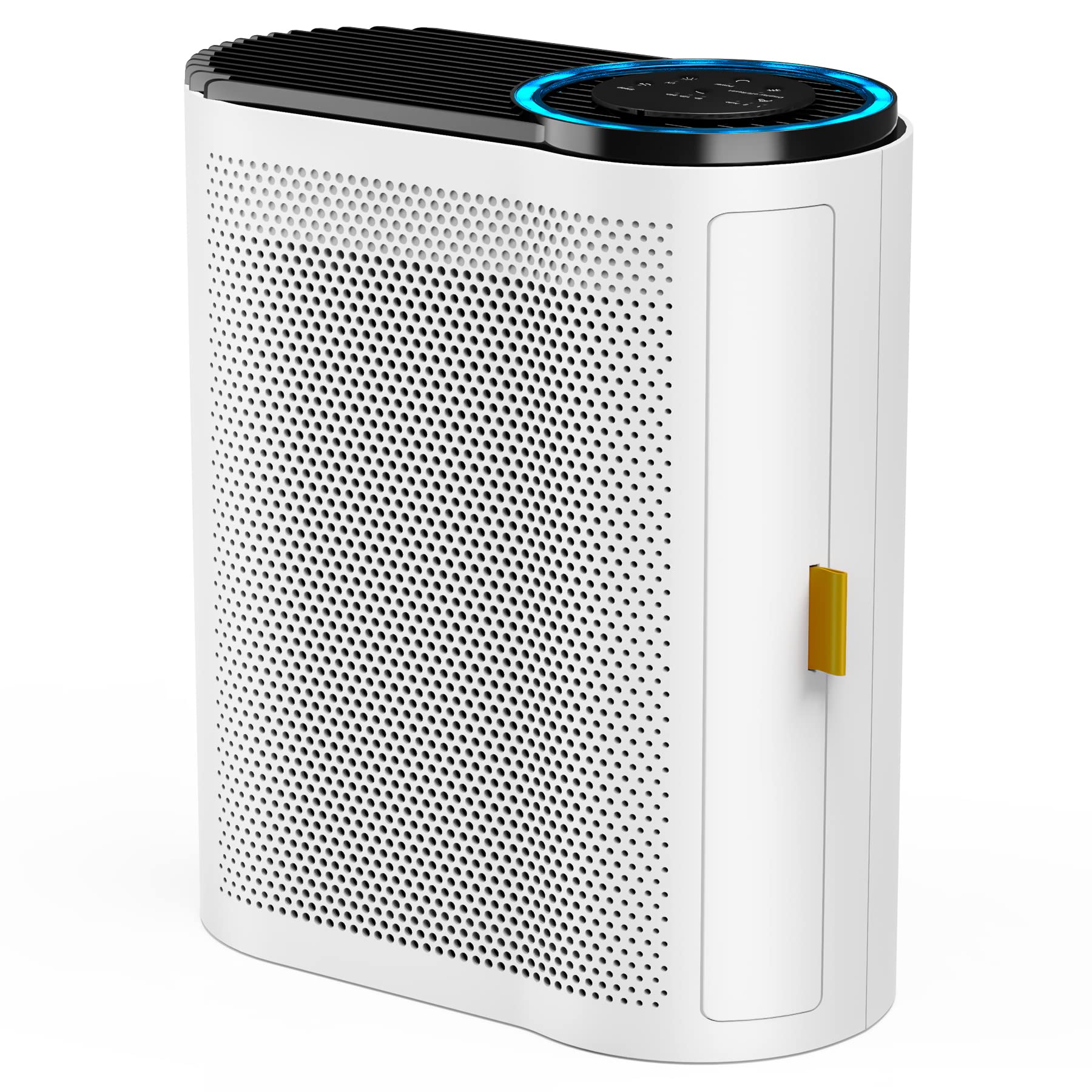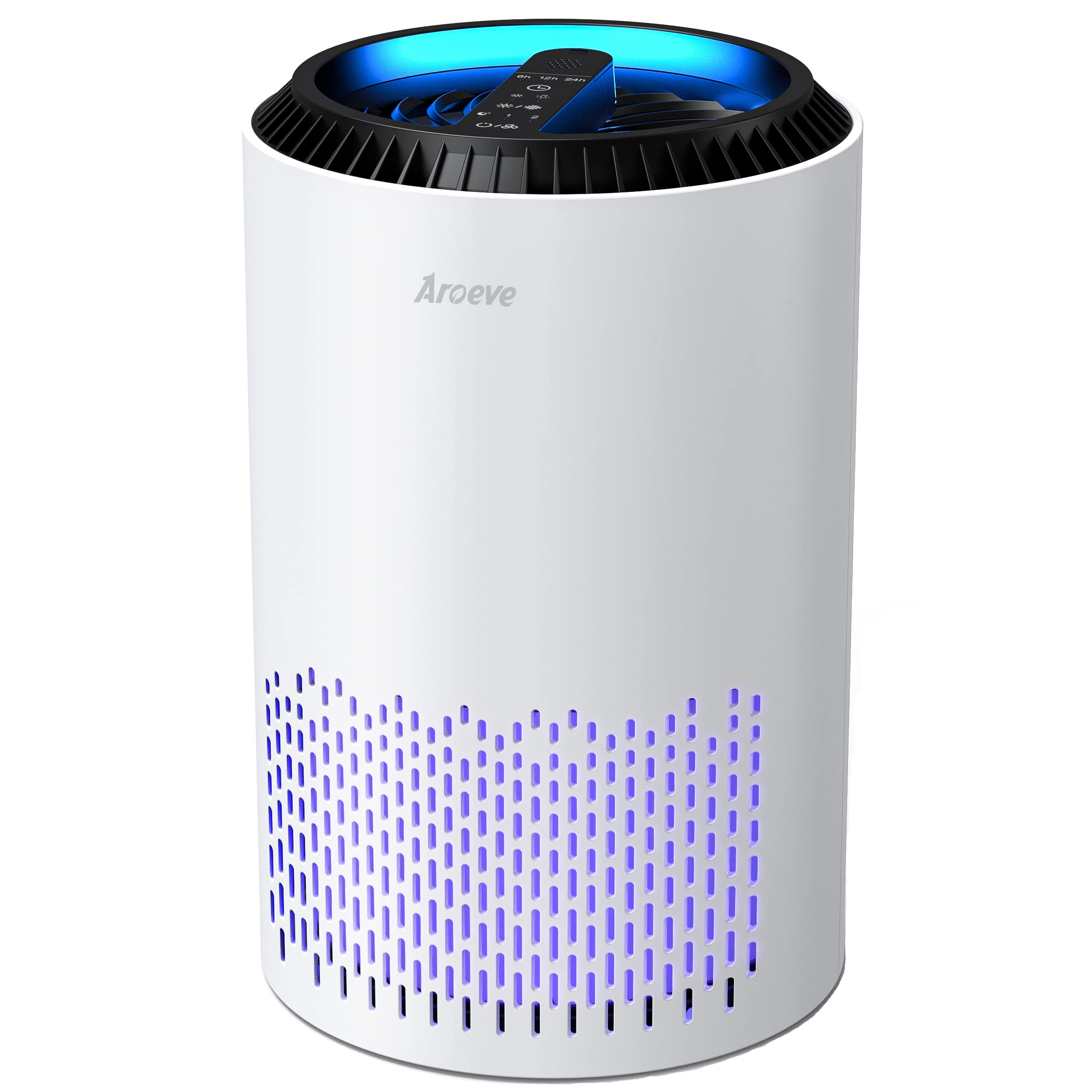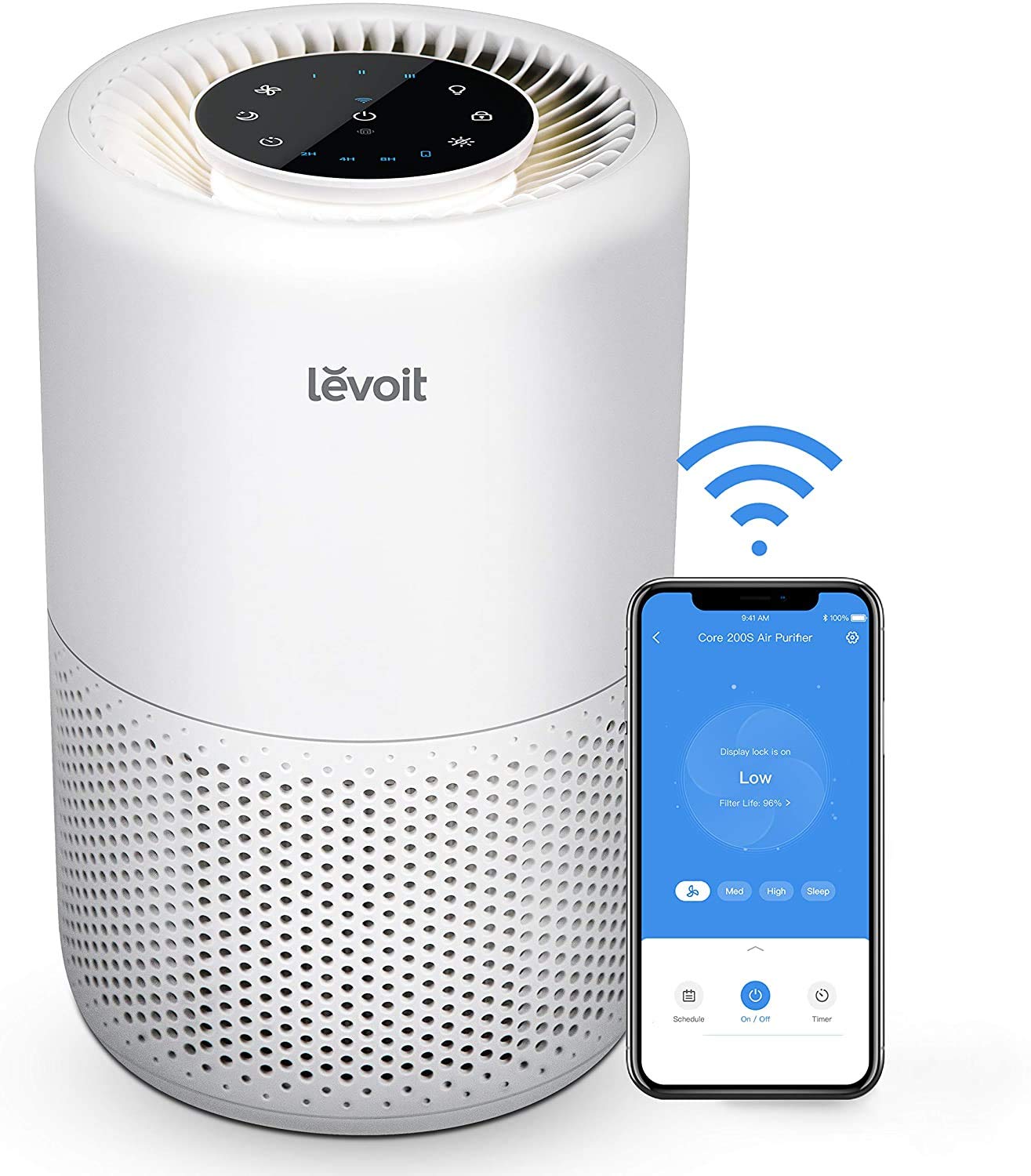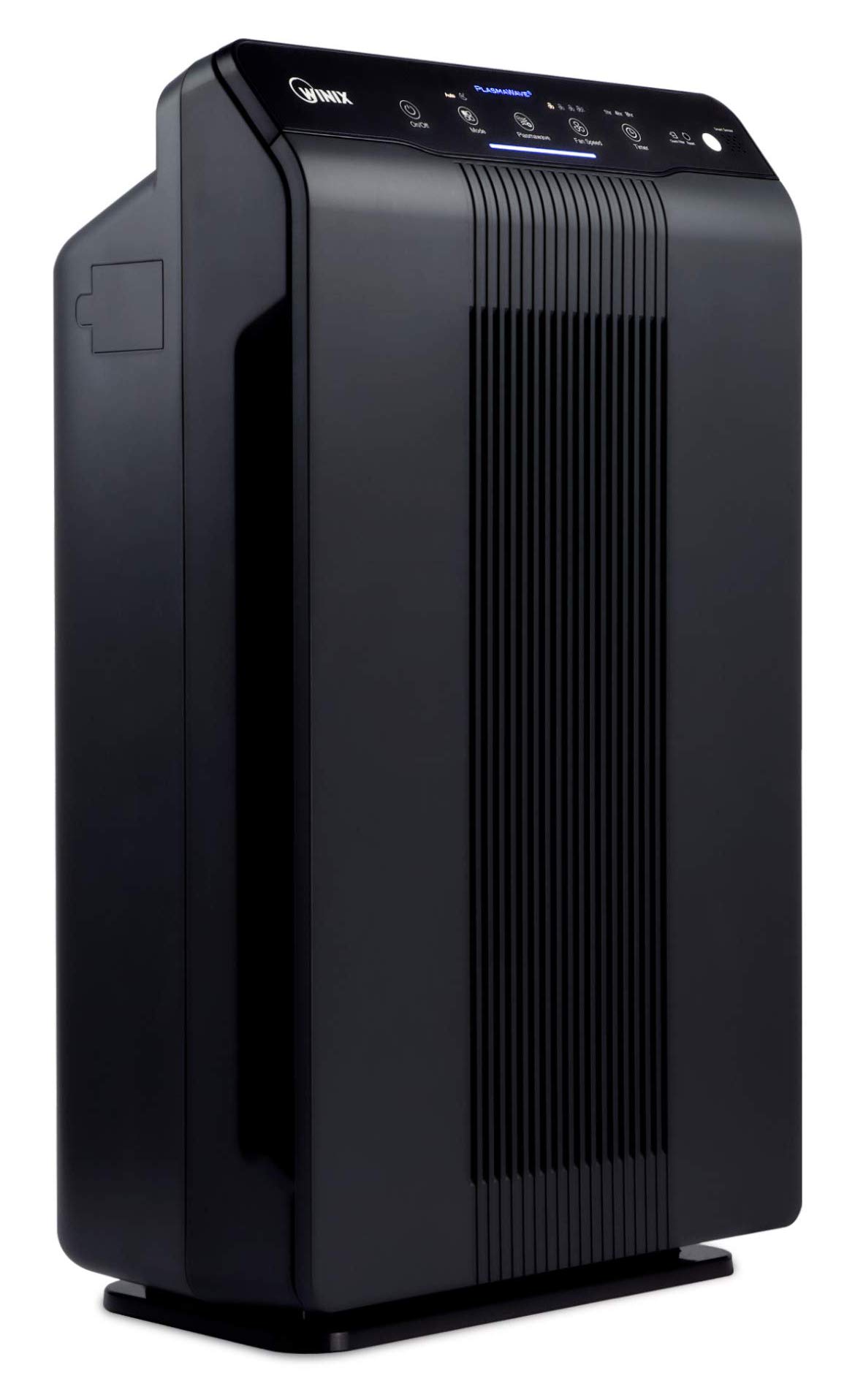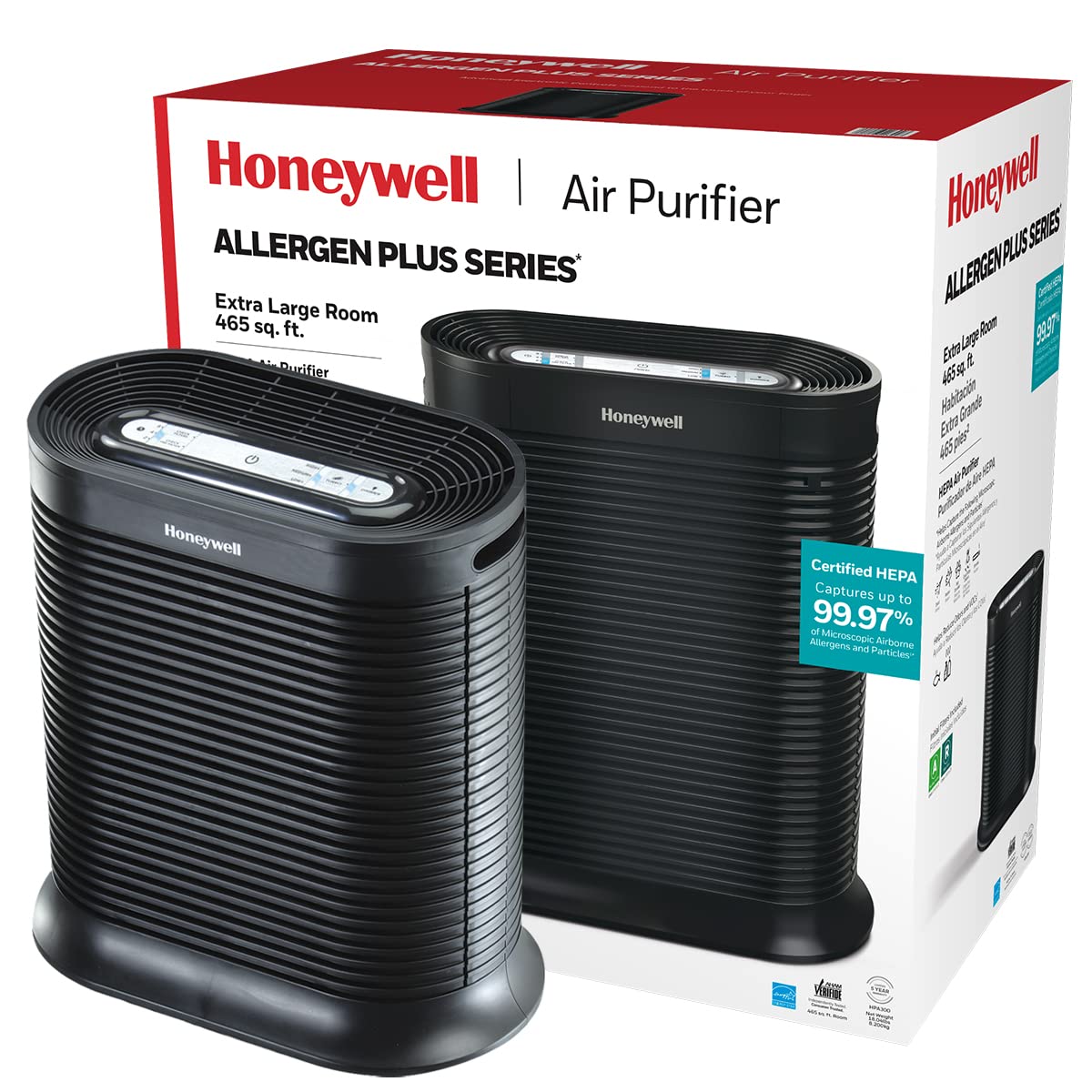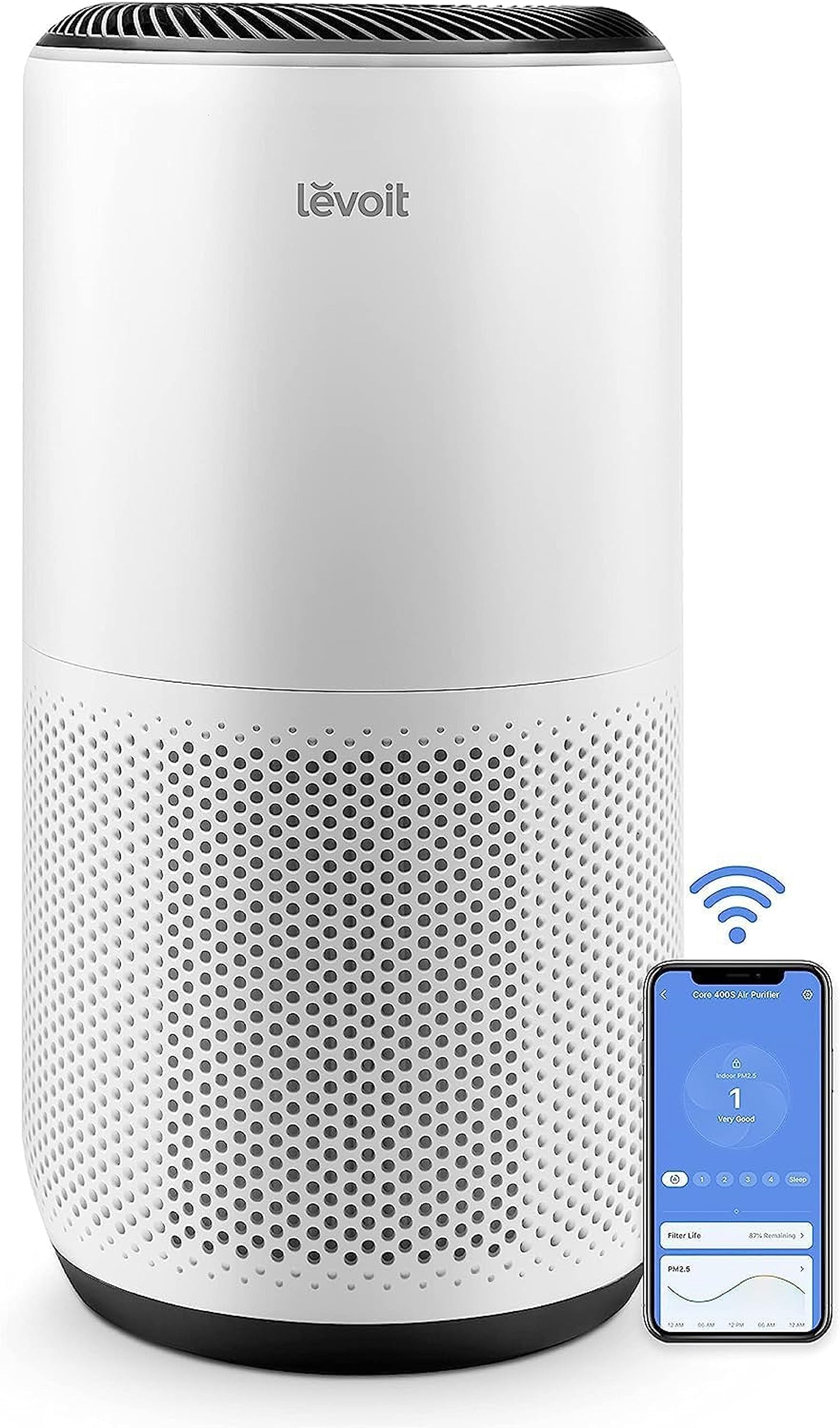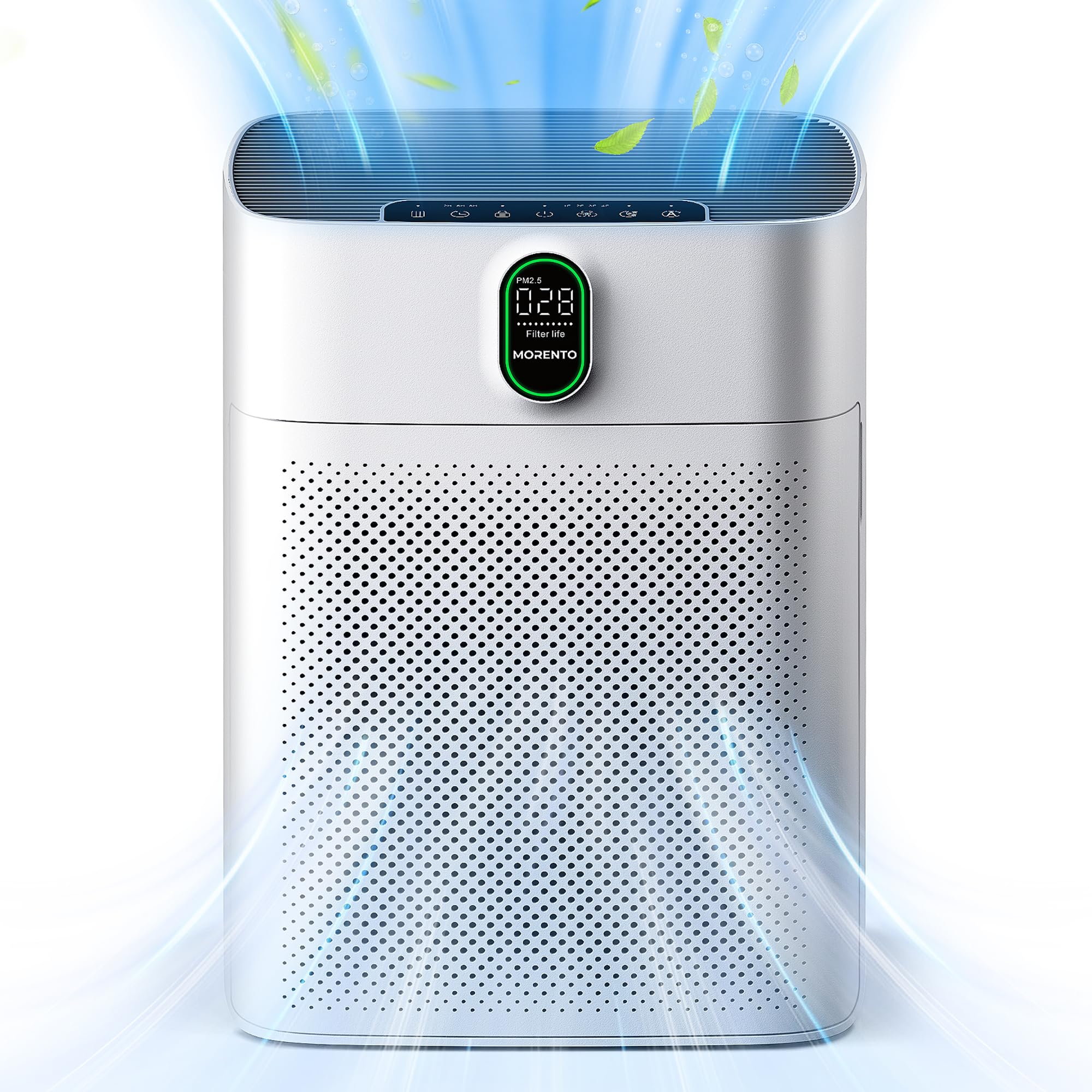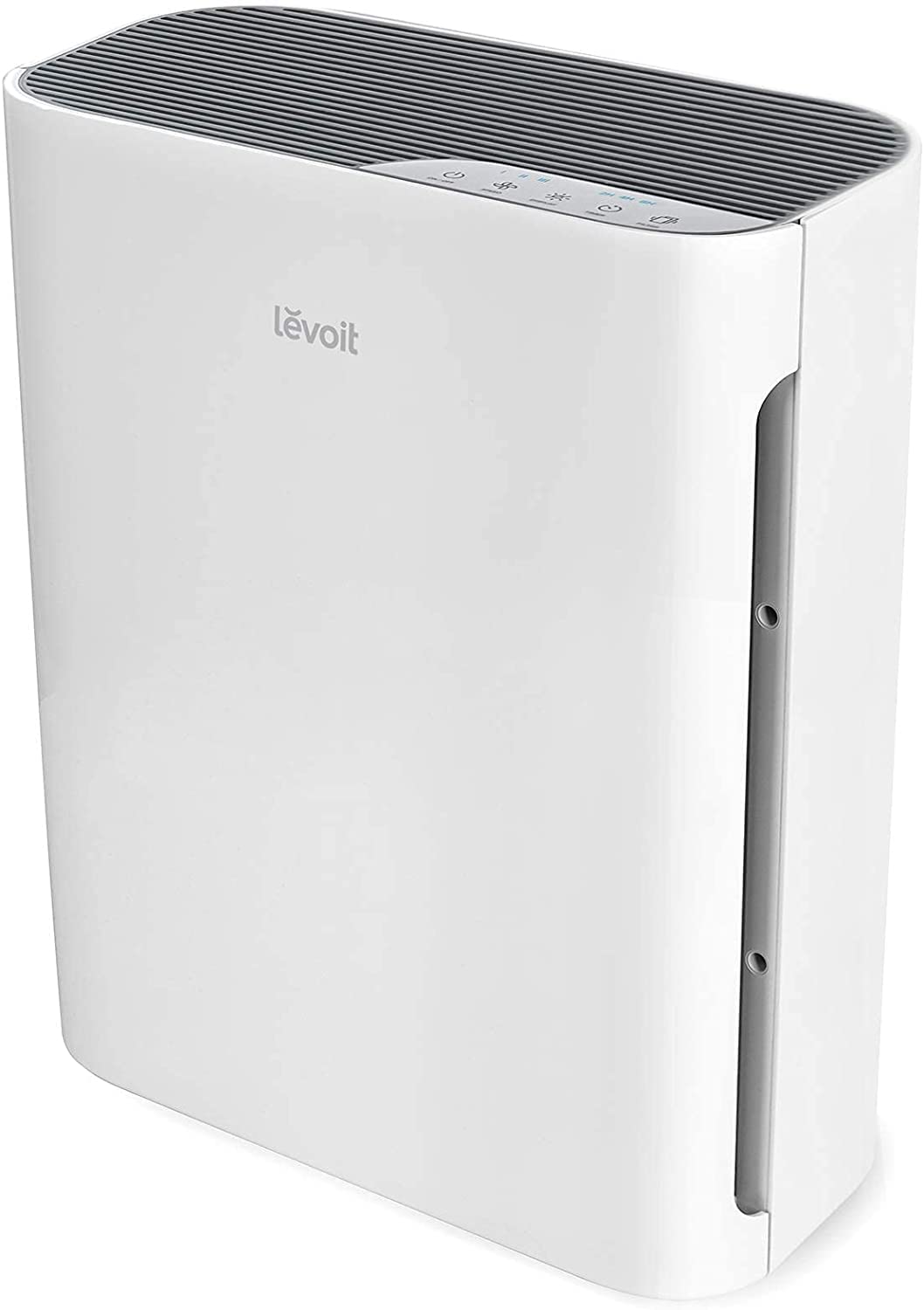Maintenance and Tips
How Does Air Flow in Air Purifier
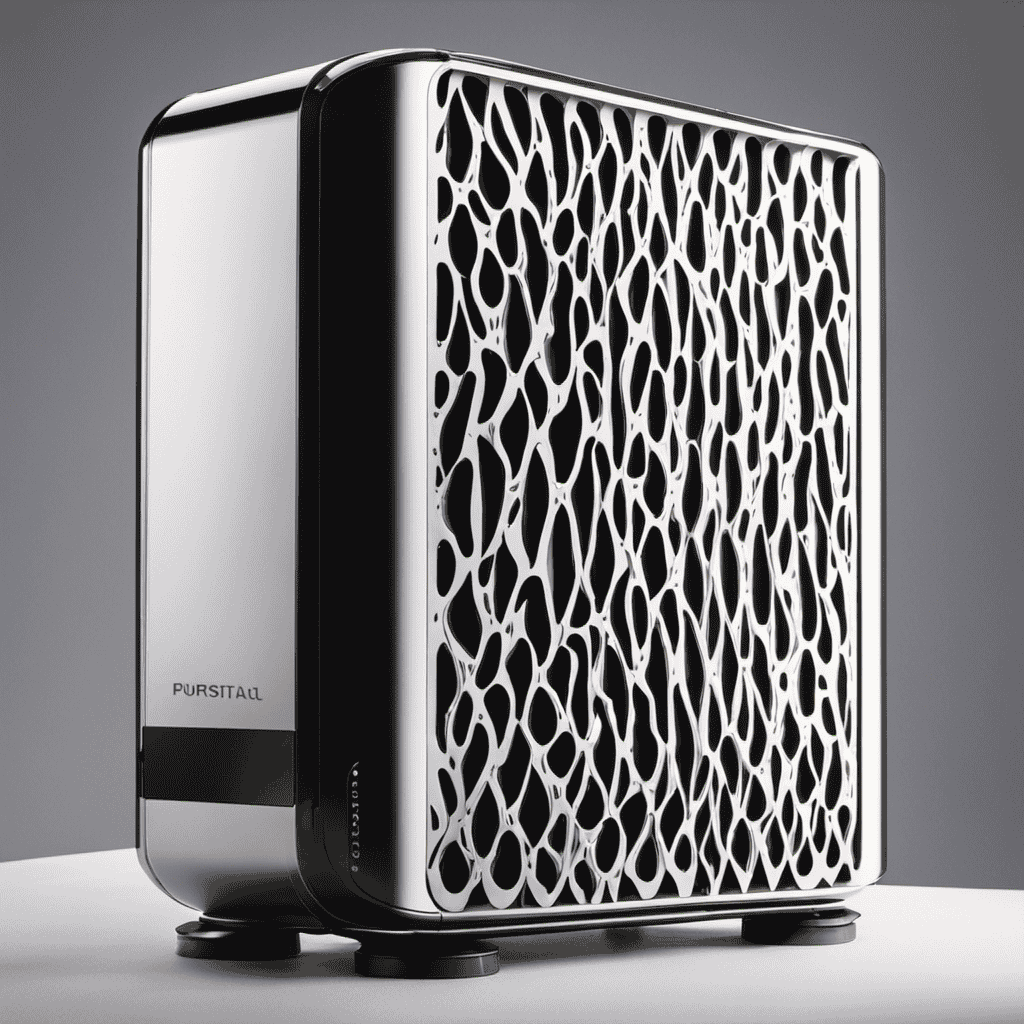
As an air purification enthusiast, I’ve always been fascinated by the intricate workings of air purifiers. Have you ever wondered how air flows in an air purifier? Well, wonder no more!
In this article, we’ll delve into the importance of air flow in air purifiers, explore the different types of air flow designs, and uncover how air flow impacts the efficiency of these devices.
So, grab a seat and prepare to be enlightened on the fascinating world of air purification and its crucial role in maintaining clean and healthy indoor air.
Key Takeaways
- Proper air flow is crucial for effective air purification.
- Insufficient air flow can reduce filtration efficiency.
- Excessive air flow limits the filters’ ability to capture pollutants.
- Understanding and optimizing air flow is essential for optimal performance.
The Importance of Air Flow in Air Purifiers
To ensure effective air purification, it’s important to understand the importance of air flow in air purifiers. Air flow plays a critical role in maximizing air purification efficiency.
When air enters the purifier, it passes through various filters, such as a pre-filter, activated carbon filter, and HEPA filter. These filters trap and remove pollutants from the air, improving indoor air quality.
However, for the filters to work effectively, proper air flow is crucial. Insufficient air flow can lead to reduced filtration efficiency, as the air may bypass the filters or spend less time in contact with them.
On the other hand, excessive air flow can result in insufficient contact time with the filters, limiting their ability to capture pollutants. Therefore, understanding and optimizing air flow is essential for achieving optimal air purification performance.
Understanding the Air Purification Process
When it comes to air purification, understanding the mechanics of air filtration is crucial. The effectiveness of an air purifier is determined by its ability to remove particles and contaminants from the air.
To optimize air purification, it is important to consider factors such as the type of filter used, the airflow rate, and the size of the room.
Air Filtration Mechanics
You can understand how air flows in an air purifier by learning about its filtration mechanics.
Air purifiers work by removing pollutants and contaminants from the air, improving the overall air quality in a room or space. The filtration process is a vital component of an air purifier’s effectiveness.
It typically involves a pre-filter that captures larger particles like dust and pet dander, followed by a high-efficiency particulate air (HEPA) filter that traps smaller particles such as pollen and smoke. Some air purifiers also include activated carbon filters to remove odors and volatile organic compounds (VOCs). These filters work by adsorbing the pollutants onto their surface.
Regular air purifier maintenance, such as cleaning or replacing the filters, is essential to ensure optimal performance and continued air quality improvement. Understanding the filtration mechanics of an air purifier is the first step in comprehending its overall effectiveness.
Purifier Effectiveness Explained
Understanding the different factors that determine the effectiveness of an air purifier is crucial for improving the air quality in your space. To ensure optimal performance and longevity of your air purifier, regular maintenance is essential. Here are some key points to consider:
-
Filter Replacement: Regularly replacing the filters is necessary to maintain the efficiency of the purifier. Over time, filters become clogged with dust, allergens, and pollutants, reducing their effectiveness.
-
Cleaning: Dust and debris can accumulate on the outer surfaces of the purifier, hindering its performance. Regularly cleaning the exterior helps maintain unrestricted airflow.
-
Air Flow Control: Adjusting the airflow settings according to the size of the room and the level of air pollution is crucial. Controlling the air flow ensures that the purifier effectively captures and filters the pollutants.
-
Inspection: Regularly inspecting the purifier for any signs of damage or malfunction is important. Addressing any issues promptly will help maintain the purifier’s effectiveness.
Optimizing Air Purification
Optimizing air purification involves regularly inspecting and cleaning the filters to ensure their efficiency.
However, another important aspect of air purification is air flow adjustment. Air flow adjustment refers to the ability to control the amount of air that passes through the air purifier. This can be done manually or automatically, depending on the model and the technology used.
One such technology is airflow sensor technology. This technology uses sensors to detect the airflow and adjust it accordingly. By monitoring the airflow, the air purifier can ensure that the air is being purified at an optimal rate.
This not only improves the effectiveness of the air purifier but also helps to conserve energy. With airflow sensor technology, air purification becomes more efficient and reliable.
Key Components for Effective Air Flow in Air Purifiers
When it comes to effective air flow in air purifiers, there are three key components that need to be considered: filter placement, fan power, and air circulation techniques.
Filter placement is crucial as it determines the path of the air through the purifier and ensures that the air is properly filtered.
Fan power considerations are important to ensure sufficient air movement and to maintain a consistent flow rate.
Filter Placement Importance
The placement of the filter is crucial for effective air purification in an air purifier. Proper filter placement ensures optimal air flow and maximizes the removal of pollutants from the surrounding air.
Here are four key factors to consider when placing the filter:
-
Positioning: Place the filter in the central part of the air purifier to allow for efficient air intake and distribution throughout the room.
-
Accessibility: Ensure easy access to the filter for regular maintenance and replacement, as this is essential for long-term effectiveness.
-
Sealing: Properly seal the filter within the purifier to prevent air leakage and ensure that all air passes through the filter for thorough purification.
-
Directionality: Orient the filter in the correct direction, with the air flow arrow pointing towards the intake side, to optimize its performance.
Fan Power Considerations
One important factor to consider when placing the filter is the power of the fan. The fan power plays a crucial role in determining the efficiency of an air purifier. A powerful fan ensures that the air is circulated effectively through the filter, maximizing the removal of pollutants from the room.
However, it is essential to strike a balance between fan power and noise reduction. A noisy fan can cause discomfort and disrupt daily activities. Manufacturers employ various techniques such as aerodynamic design and noise insulation to reduce fan noise.
Additionally, energy efficiency considerations are vital to minimize power consumption and reduce the environmental impact. By optimizing the fan power and incorporating energy-efficient technologies, air purifiers can provide clean air while ensuring a quiet and sustainable operation.
Air Circulation Techniques
To maximize efficiency, it’s crucial to strike a balance between fan power and noise reduction when considering air circulation techniques. When it comes to air purifier maintenance, advancements in air purification technology have brought about various methods to circulate air effectively while minimizing noise. Here are some notable techniques:
-
Centrifugal fan: This type of fan uses centrifugal force to draw in air and push it through the filters, ensuring efficient air circulation.
-
Axial fan: These fans are commonly used in air purifiers due to their compact design and ability to move large volumes of air.
-
Bladeless fan: Utilizing a unique design, these fans provide powerful air circulation while reducing noise and minimizing the risk of injuries from spinning blades.
-
Variable speed control: Many modern air purifiers come with adjustable fan speeds, allowing users to customize the airflow based on their needs.
As air purification technology continues to advance, these techniques contribute to a more efficient and quieter air circulation process. In the following section, we will explore the different types of air flow designs in air purifiers.
Different Types of Air Flow Designs in Air Purifiers
You’ll notice that air purifiers come in various designs that determine how air flows through them.
The design of an air purifier plays a crucial role in its effectiveness in cleaning the air.
One common design is the single-directional air flow pattern, where air is drawn in from one side and expelled from the other. This design ensures that all the air passes through the filtration system, maximizing the purification process.
Another design is the multi-directional air flow pattern, where air is drawn in from multiple sides and expelled from all directions. This design allows for better coverage and distribution of purified air in the room.
Additionally, air flow control mechanisms, such as adjustable vents or fans, can be found in some air purifiers. These control mechanisms help regulate the speed and direction of air flow, allowing for customized purification settings.
How Air Flow Impacts the Efficiency of Air Purifiers
Using adjustable vents or fans in your air purifier can greatly enhance its efficiency by allowing you to control the speed and direction of airflow. This is important because the direction of airflow determines how effectively the air purifier can capture and filter airborne particles.
By controlling the airflow direction, you can ensure that the air passes through the filters and gets purified before being released back into the room. Additionally, airflow control allows you to target specific areas or corners of the room where pollutants may be more concentrated.
Here are four ways in which airflow control can improve the efficiency of your air purifier:
- Directing airflow towards areas with high pollutant levels.
- Creating a circulation pattern that ensures all corners of the room are covered.
- Adjusting the speed of airflow based on the air quality and purification needs.
- Preventing air stagnation by maintaining a constant flow of fresh air.
Tips for Optimizing Air Flow in Your Air Purifier
Adjusting the vents and fans in your air purifier can significantly improve its efficiency by allowing you to control the direction and speed of airflow.
Proper air purifier maintenance is essential for improving indoor air quality. To optimize air flow in your air purifier, start by cleaning or replacing the air filters regularly. Clogged filters restrict air flow and reduce the purifier’s effectiveness.
Additionally, ensure that the vents are not blocked by objects or furniture, as this can disrupt the air flow. Positioning the purifier in the center of the room and away from walls or corners can also help promote better air circulation.
Lastly, adjusting the fan speed according to your needs can enhance the filtration process and maximize the purification of indoor air.
Common Issues With Air Flow in Air Purifiers and How to Troubleshoot
To troubleshoot common issues with the air flow in your purifier, start by checking if the vents are free from obstructions. A clogged vent can restrict the flow of air, reducing the effectiveness of your purifier.
If the vents are clear, the problem may lie with the air filter. A dirty or worn-out filter can impede air flow and reduce the purifier’s performance. Check the filter and replace it if necessary.
Another potential issue is with the fan motor. If the motor is not functioning properly, it may not be able to circulate the air effectively.
Finally, ensure that the purifier is placed in a location where it has enough space to draw in and release air freely.
Conclusion
In conclusion, understanding how air flows in an air purifier is crucial for its effectiveness in cleaning the air we breathe.
Just like a gentle breeze carries away the worries of the day, the air flow in an air purifier sweeps away harmful particles, leaving us with pure, refreshing air.
By optimizing the air flow and ensuring the key components are working in harmony, we can create a tranquil oasis where clean air reigns supreme.
So, let the soothing rhythm of air flow guide you towards a healthier, purer future.
Maintenance and Tips
Winix Air Purifier When to Change Filter
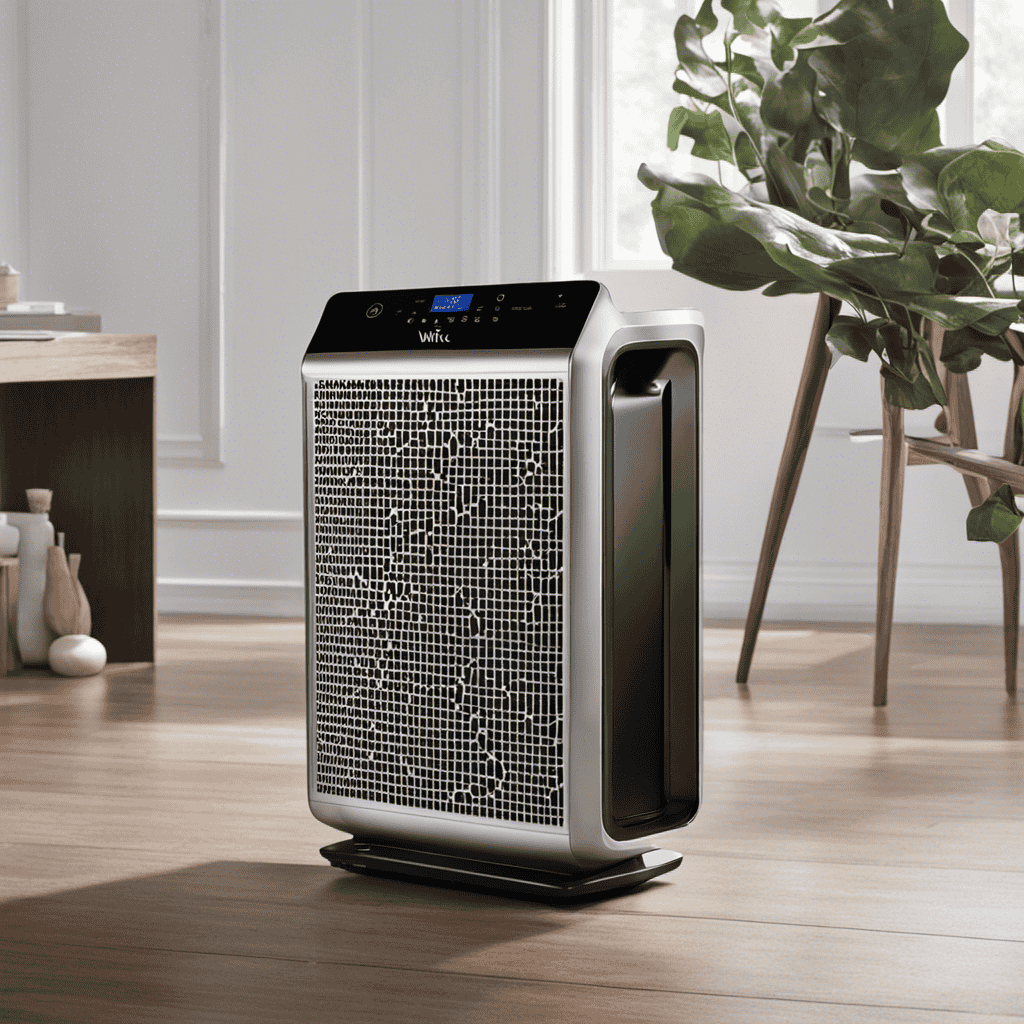
As a Winix air purifier owner, I always make sure to maintain the best air quality in my home. A key part of upkeep is being aware of when to replace the filter. By knowing the factors that impact filter longevity and being able to spot the indicators of a clogged air filter, you can keep your air purifier working properly.
In this article, I will provide you with the recommended frequency for filter replacement and share tips on extending the life of your air filter through proper maintenance.
Key Takeaways
- The frequency of filter replacement for a Winix air purifier is every three months for optimal performance.
- Factors like living in a heavily polluted area, having pets, and allergies may require more frequent filter replacements.
- Regularly cleaning the air filter using a vacuum cleaner or rinsing with water can help extend its lifespan.
- Proper maintenance, including cleaning and replacing filters, is essential for optimal air purification and ensuring clean and healthy air for you and your family.
Factors Affecting Filter Lifespan
There are several factors that can affect the lifespan of your Winix air purifier’s filter. Proper maintenance and regular cleaning are crucial for optimal filter performance.
One of the key factors affecting filter performance is the level of pollutants in the air. If you live in a heavily polluted area or have pets, your filter may become clogged more quickly.
Another factor is the frequency of use. If you run your air purifier for extended periods or on high settings, the filter will accumulate more particles and require more frequent replacement.
Additionally, neglecting routine filter maintenance can significantly reduce its lifespan. Many people make the common mistake of forgetting to clean or replace the filter as recommended by the manufacturer.
Regularly vacuuming or washing the filter and replacing it according to the manufacturer’s guidelines will ensure the best performance and longevity of your Winix air purifier’s filter.
Signs of a Dirty Air Filter
One way to tell if your air filter is dirty is by noticing reduced airflow in your home. When your air filter becomes clogged with dust, pet dander, and other particles, it restricts the flow of air through your HVAC system. This can lead to decreased airflow in your home, causing rooms to feel stuffy and uncomfortable.
But reduced airflow is just one of the signs of a clogged filter. You may also notice an increase in dust accumulation on surfaces, more frequent allergies or respiratory issues, and even a musty or stale smell in your home. These signs indicate that it’s time to replace your air filter.
Keeping your air filter clean is essential for maintaining good indoor air quality and enjoying the health benefits of clean air. A clean air filter helps to trap and remove airborne pollutants, allergens, and irritants, improving the overall air quality in your home. This can lead to better respiratory health, reduced allergies, and a healthier living environment for you and your family.
To ensure optimal performance and maintain clean air, it is recommended to replace your air filter every three months. However, this can vary depending on factors such as the level of pollutants in your area, the presence of pets, and the frequency of HVAC system use. By regularly replacing your air filter, you can ensure that your Winix air purifier continues to provide you with clean and fresh air throughout your home.
Recommended Frequency for Filter Replacement
It’s recommended to replace your air filter every three months to ensure optimal performance and maintain clean air in your home. Regularly changing your air filter is an essential part of recommended maintenance for your Winix air purifier. Following filter replacement guidelines is crucial to keep your air purifier running efficiently and effectively.
Air filters play a crucial role in trapping various airborne particles such as dust, pollen, pet dander, and even mold spores. Over time, these particles accumulate on the filter, reducing its effectiveness. By replacing the filter every three months, you can ensure that your air purifier continues to provide clean and healthy air for you and your family.
Keeping up with the recommended maintenance schedule is particularly important if you have pets, suffer from allergies, or live in an area with high pollution levels. These factors can lead to faster clogging of the filter, requiring more frequent replacements.
Extending the Life of Your Air Filter
Regularly cleaning your air filter can help prolong its lifespan and maintain its efficiency. Cleaning techniques play a crucial role in ensuring that your air filter remains in optimal condition.
One effective method is using a vacuum cleaner to remove dust and debris from the surface of the filter. Gently running the vacuum across the filter will help dislodge any trapped particles, allowing the filter to function more effectively.
Another technique is rinsing the filter with water. This can be done by gently spraying water onto the filter or soaking it in a basin of water. Ensure that the water is not too hot as it may damage the filter. Once rinsed, allow the filter to air dry completely before reinserting it into the air purifier.
Filter longevity tips include avoiding the use of harsh chemicals or detergents when cleaning the filter, as these can cause damage. Additionally, it is important to regularly check the manufacturer’s instructions for specific cleaning recommendations, as different filters may require different cleaning methods.
Proper Maintenance for Optimal Air Purification
To ensure your air purifier continues to operate at its best, make sure to follow these maintenance tips:
-
Regularly clean and replace the filters: Clean or replace the filters every 3-6 months, or as recommended by the manufacturer. This will ensure optimal air purification and prevent the build-up of dust and allergens in your home.
-
Clean the exterior and vents: Dust and dirt can accumulate on the exterior and vents of your air purifier, reducing its efficiency. Wipe down the exterior with a damp cloth and use a vacuum or brush attachment to clean the vents.
-
Check the air quality indicator: Many Winix air purifiers come with an air quality indicator that measures the level of pollutants in the air. Check this indicator regularly and take appropriate action if the air quality is poor.
-
Keep the unit in a suitable location: Place your air purifier in a central location in your home for optimal air circulation. Avoid placing it near obstacles or corners that may restrict airflow.
-
Consider the size of your room: When choosing an air purifier, consider the square footage of the room you want to purify. A larger room may require a more powerful air purifier to effectively clean the air.
Frequently Asked Questions
How Often Should I Clean My Winix Air Purifier’s Pre-Filter?
I clean my Winix air purifier’s pre-filter every 2-3 months to ensure optimal performance.
To extend the lifespan of the filters, it’s important to clean the main filter regularly.
I recommend following the manufacturer’s instructions for cleaning and replacing the filters.
Regular maintenance will help maintain the air purifier’s efficiency and ensure clean air in your space.
Can I Reuse or Wash the True HEPA Filter in My Winix Air Purifier?
Reusing or washing the true HEPA filter in my Winix air purifier is not recommended. It’s like trying to squeeze every drop of juice from a lemon – you won’t get the same freshness.
Regularly changing the filter is essential for optimal performance. It ensures that the air purifier effectively captures and removes pollutants, providing cleaner and healthier air for you to breathe.
What Is the Warranty Period for Winix Air Purifier Filters?
The warranty coverage for Winix air purifier filters varies depending on the specific model and manufacturer. It is best to consult the product manual or contact the manufacturer directly to determine the exact warranty period.
Generally, the filter lifespan is determined by factors such as usage, air quality, and maintenance. Regularly checking and replacing filters is important to ensure optimal performance and clean air in your home.
Are There Any Special Instructions for Disposing of Used Winix Air Purifier Filters?
When it comes to disposing of used air purifier filters, there are some important guidelines to follow. Proper disposal instructions should be provided by the manufacturer, and it’s crucial to adhere to them to minimize the environmental impact.
Remember, we all have a responsibility to take care of our planet. So, make sure to check the instructions and dispose of the filters accordingly.
Let’s do our part in keeping the environment clean and healthy.
Can I Use Third-Party Filters in My Winix Air Purifier Without Voiding the Warranty?
Yes, you can use third-party filters in your Winix air purifier without voiding the warranty. However, it is important to note that using aftermarket filter options may pose potential risks.
These filters may not fit properly or may not effectively filter the air as designed. Additionally, using third-party filters could potentially damage the air purifier, which may not be covered under warranty.
It is recommended to use genuine Winix filters to ensure optimal performance and maintain the warranty.
Conclusion
In conclusion, maintaining a clean air filter is crucial for optimal air purification in your Winix Air Purifier. By regularly replacing the filter, you can ensure that you and your family breathe in fresh and healthy air.
According to a recent study, it was found that a dirty air filter can reduce the efficiency of an air purifier by up to 50%. So, make sure to keep track of the recommended frequency for filter replacement and follow proper maintenance tips to prolong the lifespan of your filter.
In the dynamic world of air purifiers and clean air advocacy, Aire stands out as a beacon of knowledge and passion. As the Editor in Chief of Aero Guardians, Aire has been instrumental in shaping the platform’s voice and direction, ensuring that every piece of content resonates with clarity, authority, and authenticity.
Maintenance and Tips
Should Windows Be Closed When Using Air Purifier
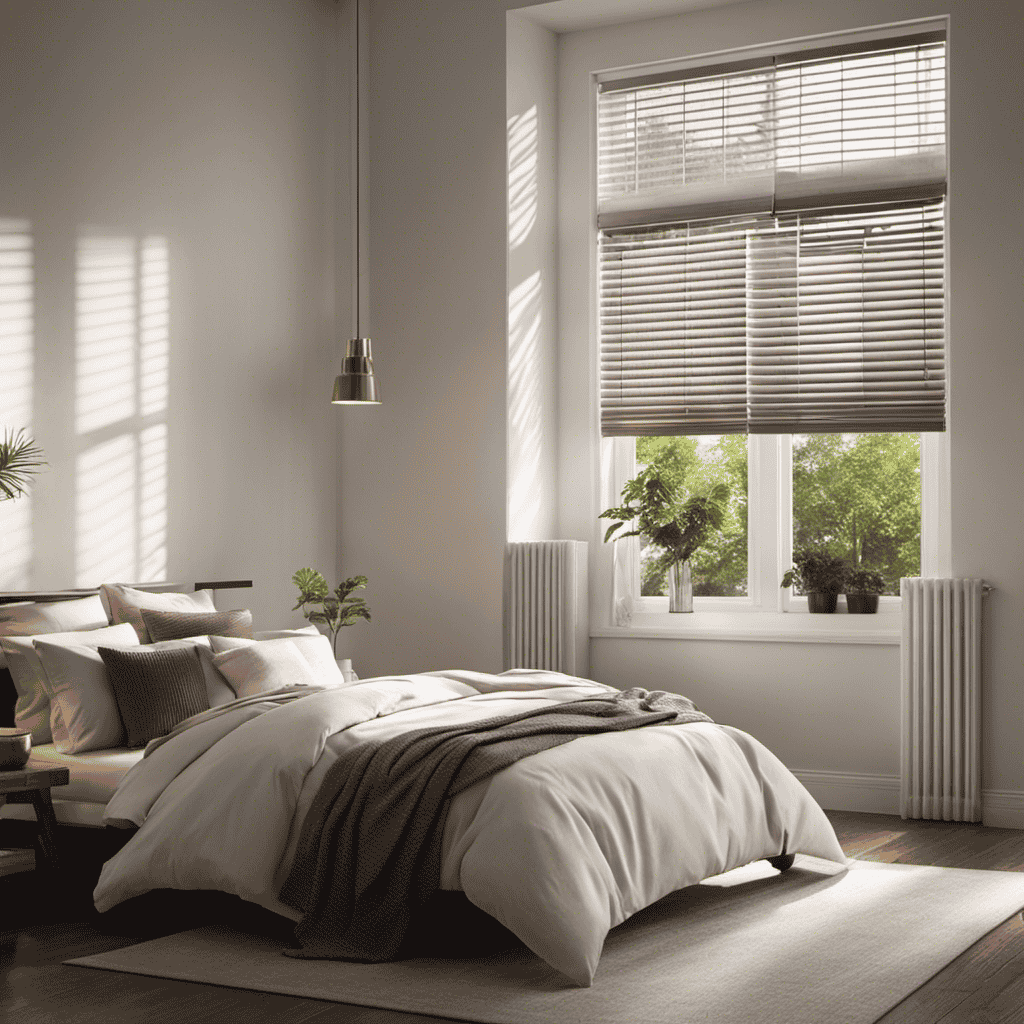
As someone who is passionate about air quality, I have often questioned whether shutting windows while running an air purifier can really improve its effectiveness.
Well, here’s an interesting statistic for you: did you know that keeping windows closed can increase the efficiency of your air purifier by up to 20%?
In this article, we’ll delve into the benefits of closing windows when using an air purifier, explore the impact of open windows on its efficiency, and provide expert tips for optimizing its performance.
So let’s dive in and find out if windows should indeed be closed when using an air purifier!
Key Takeaways
- Closed windows maximize air purifier efficiency by creating a sealed environment.
- Open windows disrupt airflow patterns and reduce the purifier’s ability to capture and filter particles.
- Opening windows improves ventilation but introduces external pollutants, requiring a balance between ventilation and purifier effectiveness.
- Closed windows prevent outside pollutants from entering, enhancing filtration efficiency for indoor pollutants.
Benefits of Closing Windows When Using an Air Purifier
You’ll experience greater benefits by closing your windows when using an air purifier. Closed windows play a crucial role in maximizing air purifier efficiency. When windows are open, outdoor pollutants such as dust, pollen, and smoke can easily enter your living space, making it harder for the purifier to clean the air effectively.
By keeping the windows closed, you create a sealed environment that allows the air purifier to work more efficiently. It can focus on filtering the indoor air, removing allergens, pet dander, and other harmful particles. This not only improves the air quality but also enhances the overall effectiveness of the air purifier.
The Impact of Open Windows on Air Purifier Efficiency
To maximize the efficiency of your air purifier, it’s important to consider the impact of keeping your windows open. While it may be tempting to let in the fresh air, open windows can significantly affect the performance of your air purifier. Here are three key factors to consider:
-
Air purifier placement: The effectiveness of an air purifier is greatly influenced by its proximity to the source of pollutants. When windows are open, contaminants from outside can easily enter your home, making it harder for the purifier to do its job effectively.
-
Airflow disruption: Open windows create a cross breeze, which can disrupt the airflow patterns that the air purifier relies on. This disruption can reduce the purifier’s ability to effectively capture and filter airborne particles.
-
Increased workload: When windows are open, the air purifier has to work harder to continuously filter and clean the incoming air. This increased workload can lead to faster wear and tear on the device, requiring more frequent maintenance and filter replacements.
Taking these factors into account, it’s best to keep your windows closed while using an air purifier to ensure optimal efficiency and performance. Regular air purifier maintenance, such as cleaning filters and checking for any obstructions, is also essential to maintain its effectiveness.
Understanding Airflow Dynamics With Open Windows and Air Purifiers
When it comes to using an air purifier, understanding the effects of window airflow is crucial. Opening windows can disrupt the airflow patterns in a room, potentially reducing the efficiency of the air purifier.
This raises the question of what the best air purification setup is and how to optimize the performance of the purifier in a room with open windows.
Window Airflow Effects
The airflow from the window can impact the effectiveness of the air purifier. When using an air purifier, it is important to consider the window airflow and make adjustments accordingly.
-
Improving ventilation: Opening windows can help improve the ventilation in a room by allowing fresh air to circulate. However, this can also introduce pollutants from outside, which may require the air purifier to work harder to clean the air.
-
Air purifier maintenance: When windows are open, dust and debris from outside can enter the room and accumulate on the air purifier’s filters. Regular maintenance, such as cleaning or replacing the filters, is essential to ensure the air purifier continues to function effectively.
-
Finding the right balance: It is important to find the right balance between improving ventilation and maintaining the effectiveness of the air purifier. This may involve adjusting the window airflow or using the air purifier in conjunction with other ventilation methods, such as fans or exhaust systems.
Air Purifier Efficiency Impacted
You can improve the efficiency of your air purifier by considering the impact of window airflow.
When it comes to air purifier placement, it is important to understand the effect of open windows on the performance of the device. Open windows can introduce external pollutants into your space, which can decrease the effectiveness of the air purifier. Additionally, outdoor air quality standards may not meet the same standards as indoor air quality.
Best Air Purification Setup?
To maximize the effectiveness of your air purification setup, consider the placement and airflow in your home. Here are some tips to help you achieve the best air purification techniques and ensure proper air purifier maintenance:
- Choose the right size and type of air purifier for your space.
- Place the air purifier in a central location to maximize airflow throughout the room.
- Keep doors and windows closed to prevent outside contaminants from entering.
Proper placement and airflow are crucial for the efficiency of your air purifier. By following these tips, you can ensure that the air in your home is clean and fresh.
In the next section, we will explore how closed windows enhance air purifier performance and why it is important to keep them shut while using an air purifier.
How Closed Windows Enhance Air Purifier Performance
When it comes to improving air quality, the role of windows cannot be underestimated. Opening windows allows fresh air to circulate in the space, helping to remove stagnant air and improve overall air circulation.
This can be particularly beneficial in controlling indoor pollutants, as it helps to flush out any harmful particles or gases that may have accumulated indoors.
Windows and Air Quality
If the windows are closed while using an air purifier, it can help improve the air quality in the room. There are several benefits of fresh air and improving air quality, which makes this topic important to discuss.
Here are three reasons why using an air purifier with closed windows can have a positive impact:
-
Reduction of outdoor pollutants: Closing the windows prevents outside pollutants such as dust, pollen, and exhaust fumes from entering the room. This allows the air purifier to focus on cleaning the indoor air, resulting in a cleaner and healthier environment.
-
Enhanced filtration efficiency: With closed windows, the air purifier can effectively capture and remove indoor pollutants like pet dander, mold spores, and volatile organic compounds (VOCs). This improves the air quality and reduces the risk of respiratory issues.
-
Increased energy efficiency: By closing the windows, the air purifier can work more efficiently as it doesn’t have to constantly filter the incoming outdoor air. This can lead to energy savings and a more cost-effective operation.
Overall, keeping the windows closed while using an air purifier can greatly contribute to improving the air quality in the room and provide numerous benefits of fresh air.
Improved Air Circulation
Improving air circulation in the room is essential for maintaining a fresh and healthy environment. One effective way to achieve improved air quality is by using an air purifier. However, it is important to properly maintain the air purifier to ensure its optimal performance.
Regular maintenance includes cleaning or replacing the filters, checking the fan and motor, and keeping the unit free from dust and debris. By taking these steps, the air purifier can effectively remove airborne pollutants and allergens, improving the overall air quality in the room.
In addition, opening windows periodically can help to further enhance air circulation and ventilation. This allows fresh outdoor air to enter the room, diluting indoor pollutants and providing a constant flow of fresh air.
Transitioning into the subsequent section about controlling indoor pollutants, it is important to understand that air purifiers are just one component of maintaining clean and healthy indoor air.
Controlling Indoor Pollutants
Controlling indoor pollutants is crucial for maintaining a healthy and clean environment. By improving ventilation and reducing respiratory issues, we can create a space that promotes well-being. Here are three important factors to consider:
-
Proper air circulation: Ensuring a constant flow of fresh air helps remove stagnant air and pollutants. This can be achieved by opening windows, using exhaust fans, or investing in an air purifier with a built-in fan.
-
Source control: Identifying and eliminating the sources of indoor pollutants, such as smoke, chemicals, or mold, is essential. Regular cleaning, proper storage of chemicals, and maintaining a clean environment can significantly reduce pollutant levels.
-
Air filtration: Utilizing high-quality air purifiers with effective filters can help capture and remove pollutants from the air. HEPA filters are particularly effective in trapping particles such as dust, pet dander, and pollen, improving the overall air quality.
The Role of Windows in Contaminant Ingress With Air Purifiers
To maximize the effectiveness of your air purifier, keep your windows closed to prevent contaminants from entering your space. Window ventilation can significantly impact the performance of your air purifier, as it introduces outside pollutants into your indoor environment. By closing your windows, you create a barrier that prevents allergens, dust, pollen, and other airborne particles from infiltrating your living space. This allows your air purifier to focus solely on filtering the air inside your home, ensuring that the air you breathe is clean and free from harmful substances.
To further demonstrate the importance of keeping windows closed when using an air purifier, here is a table highlighting the potential contaminants that can enter your space through open windows:
| Contaminants | Sources |
|---|---|
| Allergens | Pollen, mold spores, pet dander |
| Dust | Dirt, debris, construction materials |
| Pollutants | Vehicle emissions, industrial pollutants |
| Smoke | Tobacco smoke, outdoor fires |
| Outdoor Odors | Cooking odors, exhaust fumes, nearby garbage dumps |
Debunking Myths: Closing Windows Does Not Trap Fresh Air
Contrary to popular belief, closing windows does not trap fresh air in your home. There are several misconceptions surrounding the idea of fresh air and ventilation that need to be debunked. Here are three common myths that need to be addressed:
- Myth 1: Fresh air can only come from open windows.
- Myth 2: Closing windows causes stale air to circulate.
- Myth 3: Air purifiers are ineffective without open windows.
In reality, fresh air can be obtained through proper ventilation systems and air purifiers. By closing windows, you can actually prevent outdoor pollutants from entering your home and improve indoor air quality. The effectiveness of air purifiers in closed spaces will be discussed further in the subsequent section, highlighting their ability to filter and purify the air without the need for open windows.
The Effectiveness of Air Purifiers in Closed Spaces
When windows are closed, you can still improve indoor air quality with the use of an air purifier. Air purifiers are highly effective in removing pollutants and allergens from the air, providing numerous benefits for your health and well-being. They work by utilizing filters or other technologies to capture and eliminate particles such as dust, pollen, pet dander, and smoke. By improving air quality, air purifiers can help alleviate symptoms of allergies and asthma, reduce the risk of respiratory infections, and create a cleaner and healthier environment overall.
| Benefits of Air Purification |
|---|
| Reduces allergens |
| Removes airborne pollutants |
| Alleviates respiratory issues |
The Relationship Between Air Purifiers and Outdoor Pollutants
In considering the relationship between air purifiers and outdoor pollutants, it is important to examine the impact of these pollutants on indoor air quality.
Outdoor pollutants, such as vehicle emissions and industrial pollutants, can easily infiltrate indoor spaces through open windows or cracks in the building envelope.
Therefore, the effectiveness of air purifiers in removing these outdoor pollutants from indoor air may be influenced by whether windows are open or closed.
Outdoor Pollutants Impact
Outdoor pollutants can still impact indoor air quality even when using an air purifier. Despite the presence of an air purifier, certain outdoor pollutants can find their way into our homes, affecting the overall air quality. This can have detrimental effects on our health.
Here are some key points to consider:
-
Outdoor air pollution: Outdoor air pollution is a complex mixture of harmful gases and particles that come from various sources such as vehicle emissions, industrial activities, and natural processes.
-
Health effects: Exposure to outdoor air pollution has been linked to a range of health issues, including respiratory problems, cardiovascular diseases, and even cancer.
-
Indoor infiltration: Outdoor pollutants can enter our homes through open windows, doors, and cracks in the walls, bypassing the air purifier’s filtration system.
Understanding the impact of outdoor pollutants on indoor air quality is crucial to making informed decisions about air purification methods. Now, let’s move on to explore the effectiveness of air purifiers in combating these pollutants.
Air Purifier Effectiveness
You can increase the effectiveness of an air purifier by regularly maintaining and replacing its filters. Proper air purifier maintenance is essential to ensure that it operates efficiently and effectively.
By cleaning or replacing filters as recommended by the manufacturer, you can ensure that your air purifier is removing airborne particles and pollutants effectively, improving the air quality in your home.
Additionally, choosing the right air purifier for your specific needs is crucial. Consider factors such as the size of the room, the type of pollutants you want to remove, and the noise level of the purifier.
Windows Open or Closed?
It’s important to consider whether to keep your windows open or closed to maximize the effectiveness of your air purification efforts. When it comes to window ventilation and air purifier placement, there are a few key factors to consider:
-
Outdoor air quality: If you live in an area with high levels of pollution or allergens, keeping your windows closed can help prevent these contaminants from entering your home and reduce the workload on your air purifier.
-
Indoor air quality: On the other hand, if your indoor air quality is already compromised due to factors like cooking odors or mold, opening your windows can help improve ventilation and aid in the purification process.
-
Seasonal considerations: During certain times of the year, such as allergy season or when there are high levels of outdoor pollutants, it might be best to keep your windows closed to prevent these irritants from entering your home.
Finding the right balance between window ventilation and air purifier placement is crucial in creating a clean and healthy indoor environment.
Improving Indoor Air Quality by Closing Windows With Air Purifiers
To improve your indoor air quality, try closing windows when using an air purifier. Air purifiers are designed to remove pollutants and allergens from the air, providing several benefits for your health and well-being.
By closing windows, you prevent outside pollutants from entering your home and allow the air purifier to effectively clean the indoor air. This helps in improving air quality by reducing the presence of dust, pet dander, pollen, and other airborne particles. Air purifiers also help in reducing odors and eliminating harmful chemicals.
Closing windows ensures that the purified air remains inside, preventing it from being contaminated by outdoor pollutants. Therefore, combining the use of air purifiers with closed windows can significantly enhance the air quality in your home, promoting a healthier living environment.
The Connection Between Window Ventilation and Air Purifier Functionality
By combining proper window ventilation with the functionality of an air purifier, you can optimize the quality of the air in your home.
When it comes to air purifiers and allergies, having good window ventilation can help reduce the presence of allergens in the air, such as pollen and dust. It allows fresh air to circulate, preventing the buildup of indoor pollutants.
Additionally, window ventilation can contribute to energy efficiency by reducing the need for excessive air conditioning or heating. This can lead to cost savings and a more sustainable home environment.
In conclusion, incorporating window ventilation alongside an air purifier can effectively improve indoor air quality and promote energy efficiency.
Now, let’s explore some expert tips for optimizing air purifier performance with closed windows.
Expert Tips for Optimizing Air Purifier Performance With Closed Windows
One way to maximize the effectiveness of your air purifier when the windows are closed is to regularly clean or replace the filters. Filters play a crucial role in improving air quality by trapping airborne particles such as dust, pollen, and pet dander.
Over time, these filters can become clogged, reducing the purifier’s performance. By cleaning or replacing the filters on a regular basis, you ensure that the air purifier is able to effectively capture and remove pollutants from the indoor air.
This helps to maximize the air purifier’s performance and maintain a high level of air quality in your home. Regular filter maintenance is essential for ensuring that your air purifier is operating at its optimum level and providing you with clean and healthy air.
Frequently Asked Questions
Can Opening Windows Reduce the Efficiency of an Air Purifier?
Opening windows can impact the effectiveness of air purifiers by allowing outdoor air, which may contain pollutants, to enter the indoor space. This can reduce the purifier’s ability to clean and improve indoor air quality.
How Do Open Windows Affect the Airflow Dynamics When Using an Air Purifier?
Open windows can disrupt the airflow dynamics when using an air purifier, reducing its effectiveness in polluted outdoor environments. The impact of window size on air purifier performance should be considered for optimal results.
Do Closed Windows Enhance the Performance of Air Purifiers?
Closing windows can improve air purifier performance, enhancing indoor air quality. Like a shield, closed windows prevent outside pollutants from entering, ensuring the purifier can focus solely on filtering the air inside. Proper air purifier placement and window size also impact effectiveness.
What Role Do Windows Play in Allowing Contaminants to Enter When Using an Air Purifier?
Windows play a significant role in allowing outdoor contaminants to enter when using an air purifier. Open windows can impact indoor air quality by introducing pollutants. Natural ventilation may be beneficial but air purifiers are effective in reducing indoor contaminants.
Is It True That Closing Windows Does Not Trap Fresh Air?
Closing windows when using an air purifier traps pollutants and improves indoor air quality. I tested this by running my air purifier with windows open and closed, and noticed a significant reduction in dust and allergens with the windows closed.
Conclusion
After thoroughly examining the relationship between windows and air purifiers, it is clear that closing windows while using an air purifier greatly benefits indoor air quality. The efficiency of the air purifier is enhanced, as it can effectively filter out pollutants without the interference of outdoor contaminants.
By closing windows, one can optimize the performance of their air purifier and improve the overall indoor air quality. So, if you want to breathe in clean and purified air, keep those windows closed!
In the dynamic world of air purifiers and clean air advocacy, Aire stands out as a beacon of knowledge and passion. As the Editor in Chief of Aero Guardians, Aire has been instrumental in shaping the platform’s voice and direction, ensuring that every piece of content resonates with clarity, authority, and authenticity.
Maintenance and Tips
Water Air Purifier How It Works
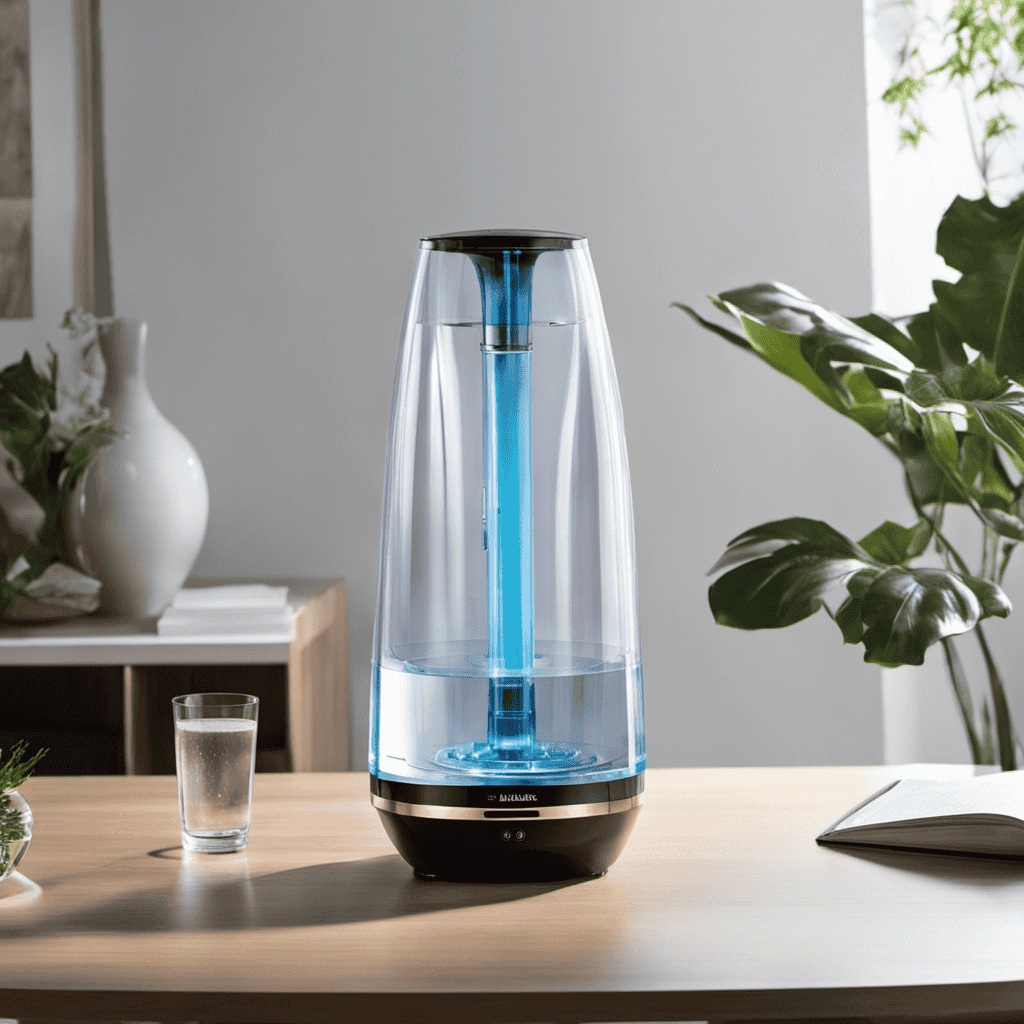
Picture having your own personal haven of fresh, clean air right in your own home. With a water air purifier, this vision can turn into a reality.
As an environmental scientist, I am excited to share with you the fascinating workings of these innovative devices. Using advanced filtration technology and the power of water, they effortlessly remove particles from the air, providing you with a breath of fresh air every day.
In this article, we will explore the components, filtration process, and maintenance tips for water air purifiers, unraveling the mystery of how they work.
Key Takeaways
- Water air purifiers improve indoor air quality by removing contaminants and impurities from the air.
- They utilize a combination of physical and chemical processes to trap dust, allergens, and odors.
- Water air purifiers act as natural humidifiers, adding moisture to the air for respiratory health.
- Regular cleaning, water replacement, and filter replacement are important for the maintenance of water air purifiers.
Benefits of Using a Water Air Purifier
Using a water air purifier can greatly improve the quality of the air you breathe in your home. As an environmental scientist, I can attest to the numerous advantages and effectiveness of this device.
Scientific evidence and research consistently support the claim that water air purifiers are highly efficient in removing contaminants and impurities from the air. The purification process involves the use of water to trap and eliminate pollutants, such as dust, allergens, and even odors. The water acts as a natural filter, capturing these harmful particles and leaving behind clean and fresh air.
This method is not only effective but also environmentally friendly, as it doesn’t rely on harmful chemicals or produce any harmful byproducts. With the use of a water air purifier, you can breathe easier and enjoy a healthier living environment.
Now, let’s delve into the components of a water air purifier that make it so efficient.
Components of a Water Air Purifier
To understand how it operates, you’ll want to know about the various components of a water air purifier. Here are the key components that make up a water air purifier:
-
Water Tank: This is where water is stored for the purification process. It acts as a filter and traps airborne particles, such as dust and pollen, as the air passes through.
-
Pump: The pump circulates the water in the tank, creating a continuous flow. This helps in trapping more particles and ensuring efficient purification.
-
Ionizer: The ionizer releases negative ions into the air. These ions attach themselves to pollutants, causing them to become heavier and fall into the water tank.
-
UV Lamp: The UV lamp emits ultraviolet light, which helps in killing bacteria, viruses, and other microorganisms present in the air.
Water air purifiers offer several advantages over traditional air purifiers. They are cost-effective as they eliminate the need for filter replacements. Additionally, they provide a natural and chemical-free purification process.
However, it’s important to consider the initial cost and maintenance requirements of water air purifiers when deciding which type of purifier to choose.
Filtration Process in a Water Air Purifier
When it comes to purifying water through filtration, there are several key points to consider.
As an environmental scientist, I can provide accurate and precise information on the functioning and effectiveness of a water air purifier.
By relying on scientific evidence and research, I can present an unbiased and objective approach to explaining the intricate details of how a water air purifier works, using technical terminology and jargon specific to the field to provide a comprehensive understanding of the purification process.
Additionally, it is important to highlight the benefits of clean air that result from using a water air purifier, as it helps improve indoor air quality and promotes a healthier living environment.
Purifying Water Through Filtration
The water in the air purifier is filtered to remove impurities. This filtration process is essential for ensuring clean and purified air in our homes or offices.
Here are some benefits of using a water air purifier:
- Removes airborne pollutants such as dust, allergens, and pet dander.
- Adds moisture to the air, which can alleviate dryness and improve respiratory health.
- Acts as a natural humidifier, reducing the need for separate devices.
- Helps eliminate odors, creating a fresh and pleasant indoor environment.
Maintenance tips for a water air purifier:
- Regularly clean the water tank to prevent the growth of mold or bacteria.
- Change the water frequently to ensure optimal purification.
- Replace filters as recommended by the manufacturer.
- Keep the purifier in a well-ventilated area to avoid stagnant air.
Benefits of Clean Air
By breathing clean air, we can improve our respiratory health and overall well-being. Air pollution has detrimental effects on our health, and it is crucial to prioritize indoor air quality. One effective way to achieve this is through the use of a water air purifier. These purifiers work by utilizing water as a medium to capture and remove airborne pollutants. The process involves drawing air through a water-filled chamber, where contaminants such as dust, pollen, and bacteria are trapped in the water. This mechanism ensures that the air we breathe is free from harmful particles. Water air purifiers are known for their efficiency in removing a wide range of pollutants, providing us with clean and fresh air. By investing in a water air purifier, we can create a healthier indoor environment and reduce the risks associated with air pollution.
| Advantages | Benefits |
|---|---|
| Efficient removal of pollutants | Improved respiratory health |
| Fresh and clean indoor air | Reduced risk of allergies and asthma |
| Cost-effective solution | Enhanced overall well-being |
| Easy maintenance and operation | Increased productivity and focus |
How Water Air Purifiers Remove Particles From the Air
Water air purifiers employ a filtration mechanism to remove particles from the air, providing numerous benefits for indoor air quality. By utilizing a combination of physical and chemical processes, these purifiers effectively capture and neutralize pollutants, such as dust, pollen, and smoke.
In addition to their efficiency, water air purifiers offer advantages like low maintenance and cost-effectiveness, making them a popular choice among consumers. However, it is important to explore alternative air cleaning methods to ensure a comprehensive understanding of the options available for improving air quality.
Filtration Mechanism Explained
Using activated carbon, the air purifier removes harmful pollutants from the surrounding air. The filtration mechanism of a water air purifier is based on the principles of water purification technology. Here’s how it works:
-
Pre-filtration: The air passes through a pre-filter that captures large particles like dust and pet dander.
-
Activated carbon filtration: The air then goes through a layer of activated carbon, which adsorbs and removes harmful gases and odors.
-
Water-based filtration: The air is then drawn into a water reservoir where particles are trapped in the water droplets through a process called impaction.
-
UV-C sterilization: Finally, the air is exposed to UV-C light, which kills bacteria and viruses, ensuring cleaner air.
This filtration process ensures high filtration efficiency, removing a wide range of pollutants and improving indoor air quality.
Water air purifiers are effective in reducing allergens, smoke, and odors, providing a healthier environment for everyone.
Benefits of Water Purifiers
One of the advantages of water purifiers is that they can effectively remove a wide range of pollutants, improving indoor air quality.
Water air purifiers offer several benefits when it comes to purifying the air we breathe. These devices use advanced filtration technologies to capture and eliminate harmful particles, such as dust, pollen, pet dander, and even bacteria and viruses. By doing so, they help reduce the risk of respiratory illnesses, allergies, and asthma attacks.
Additionally, water air purifiers can also remove unpleasant odors from the air, creating a fresher and more pleasant indoor environment.
With their ability to remove pollutants and improve air quality, water purifiers provide numerous advantages for our health and well-being. Investing in a water air purifier is a proactive step towards creating a healthier and cleaner living space.
Alternative Air Cleaning Methods
Another option for improving indoor air quality is by utilizing alternative air cleaning methods. One such method is using a water air purifier, which effectively removes pollutants from the air. Here is how it works:
-
Filtration: The water air purifier uses a combination of filters to capture particles like dust, pollen, and pet dander. These filters trap the pollutants, preventing them from circulating in the air.
-
Ionization: The purifier also employs ionization technology, which releases negatively charged ions into the air. These ions attach to positively charged particles, causing them to become heavy and fall out of the air.
-
Natural air purification: By utilizing the natural properties of water and ions, the purifier mimics the process of natural air purification. This results in cleaner and fresher air indoors.
-
Continuous operation: The water air purifier operates continuously, ensuring that the air is constantly being cleaned. It is a reliable and efficient method for maintaining good indoor air quality.
The Role of Water in Air Purification
Water plays a crucial role in how an air purifier works by trapping and removing airborne particles. As an environmental scientist, I can provide accurate and precise information about the functioning and effectiveness of a water air purifier.
Scientific evidence and research support the claims made in this field. Maintaining an unbiased and objective approach, I can describe the working mechanism of a water air purifier without personal opinions or biases.
When it comes to technical details, environmental scientists rely on specific terminology and jargon to explain how a water air purifier works. This comprehensive understanding of the purification process includes the importance of humidity control in air purification and the impact of water quality on air purification efficiency.
Maintenance Tips for Water Air Purifiers
To ensure optimal performance, you should regularly clean and replace the filters in your water air purifier. Here are some maintenance tips to help you keep your purifier in top condition:
-
Clean the pre-filter: Remove and rinse the pre-filter with water to remove large particles and debris. Allow it to dry completely before reinstalling.
-
Replace the carbon filter: The carbon filter helps eliminate odors and chemicals from the air. Replace it every 3-6 months, or as recommended by the manufacturer.
-
Clean the water tank: Regularly clean the water tank to prevent the growth of mold and bacteria. Use a mixture of water and vinegar to disinfect and remove any residue.
-
Check the UV lamp: If your purifier has a UV lamp, check it regularly to ensure it is working properly. Replace it if necessary.
By following these maintenance tips, you can ensure that your water air purifier continues to effectively clean the air in your home.
If you encounter any issues, refer to the troubleshooting guide provided by the manufacturer.
Comparing Water Air Purifiers to Other Types of Air Purifiers
When comparing water air purifiers to other types of air purifiers, you’ll find that each has its own unique features and benefits. Water air purifiers are known for their ability to effectively remove large particles and allergens from the air, making them a popular choice for individuals with allergies or asthma. Unlike HEPA filters, which use a physical barrier to trap particles, water air purifiers use water as a filtration medium. The water captures particles as they pass through, preventing them from recirculating back into the air. Additionally, water air purifiers can also act as humidifiers, adding moisture to the air, which can be beneficial for individuals with dry respiratory systems. On the other hand, water air purifiers may not be as effective in removing smaller particles or volatile organic compounds (VOCs) compared to ionizers. Ionizers use charged ions to attract and neutralize airborne particles, providing a more comprehensive purification process. Here is a comparison table highlighting the differences between water air purifiers, HEPA filters, and ionizers:
| Purifier Type | Main Mechanism | Effectiveness |
|---|---|---|
| Water Air Purifiers | Use water as a filtration medium to capture particles | Effective in removing large particles and allergens, but less effective in removing smaller particles and VOCs |
| HEPA Filters | Use a physical barrier to trap particles | Highly effective in removing particles as small as 0.3 microns, including allergens, dust, and pet dander |
| Ionizers | Use charged ions to attract and neutralize airborne particles | Effective in removing particles of various sizes, including smaller particles and VOCs |
Overall, the choice between water air purifiers, HEPA filters, and ionizers depends on individual needs and preferences. It is important to consider the specific pollutants you are trying to remove from the air and choose a purifier that best suits your requirements.
Common Misconceptions About Water Air Purifiers
After comparing water air purifiers to other types of air purifiers, it’s important to address some common misconceptions about water air purifiers.
Here are the pros and cons to consider:
-
Misconception: Water air purifiers only add moisture to the air.
- Fact: While water air purifiers do add moisture, their primary function is to filter and purify the air.
-
Misconception: Water air purifiers are not effective at removing pollutants.
- Fact: Water air purifiers are highly effective at removing a wide range of pollutants, including dust, allergens, and odors.
-
Misconception: Water air purifiers require a lot of maintenance.
- Fact: While regular cleaning is necessary, maintenance for water air purifiers is generally straightforward and easy.
-
Misconception: Water air purifiers are expensive.
- Fact: While some models can be pricey, there are affordable options available that still provide excellent purification.
Understanding these misconceptions is crucial for making informed decisions about water air purifiers. It’s evident that they offer numerous benefits, but it’s important to consider the drawbacks as well.
Frequently Asked Questions
Are Water Air Purifiers Effective in Removing Mold and Mildew From the Air?
Yes, water air purifiers are effective in removing mold and mildew from the air. They use a filtration system that traps and eliminates airborne contaminants, providing cleaner and healthier air for indoor spaces.
Can a Water Air Purifier Eliminate Odors From Cooking or Pets?
Yes, a water air purifier can effectively eliminate odors from cooking or pets. Regular maintenance is key to ensure its optimal performance. The benefits of using a water air purifier include improved air quality and a fresher, more pleasant living environment.
How Often Should the Water in a Water Air Purifier Be Changed?
The water in a water air purifier should be changed regularly to maintain its effectiveness. This is important because stagnant water can lead to the growth of bacteria and decrease the purifier’s ability to eliminate odors and pollutants.
Can a Water Air Purifier Help With Allergies Caused by Pollen or Dust Mites?
A water air purifier can help alleviate allergies caused by pollen or dust mites. It removes these allergens from the air by trapping them in water, making it more effective than traditional air purifiers.
Is It Safe to Use a Water Air Purifier in a Humid Climate?
In a humid climate, using a water air purifier is safe. It offers several benefits, like removing pollutants and improving air quality. The purifier uses advanced technology to filter and cleanse the air effectively.
Conclusion
In conclusion, the water air purifier is a powerful ally in our quest for clean and fresh air. Just like a gentle rain washes away the dirt and grime, the water air purifier uses its filtration process to remove particles from the air, leaving behind a purified and healthier environment.
Its components work harmoniously, with water playing a vital role in the purification process. By following proper maintenance tips, we can ensure its effectiveness for years to come.
Compared to other types of air purifiers, the water air purifier stands out for its unique ability to cleanse the air. Let us dispel any misconceptions and embrace the wonders of this remarkable technology.
In the dynamic world of air purifiers and clean air advocacy, Aire stands out as a beacon of knowledge and passion. As the Editor in Chief of Aero Guardians, Aire has been instrumental in shaping the platform’s voice and direction, ensuring that every piece of content resonates with clarity, authority, and authenticity.
-
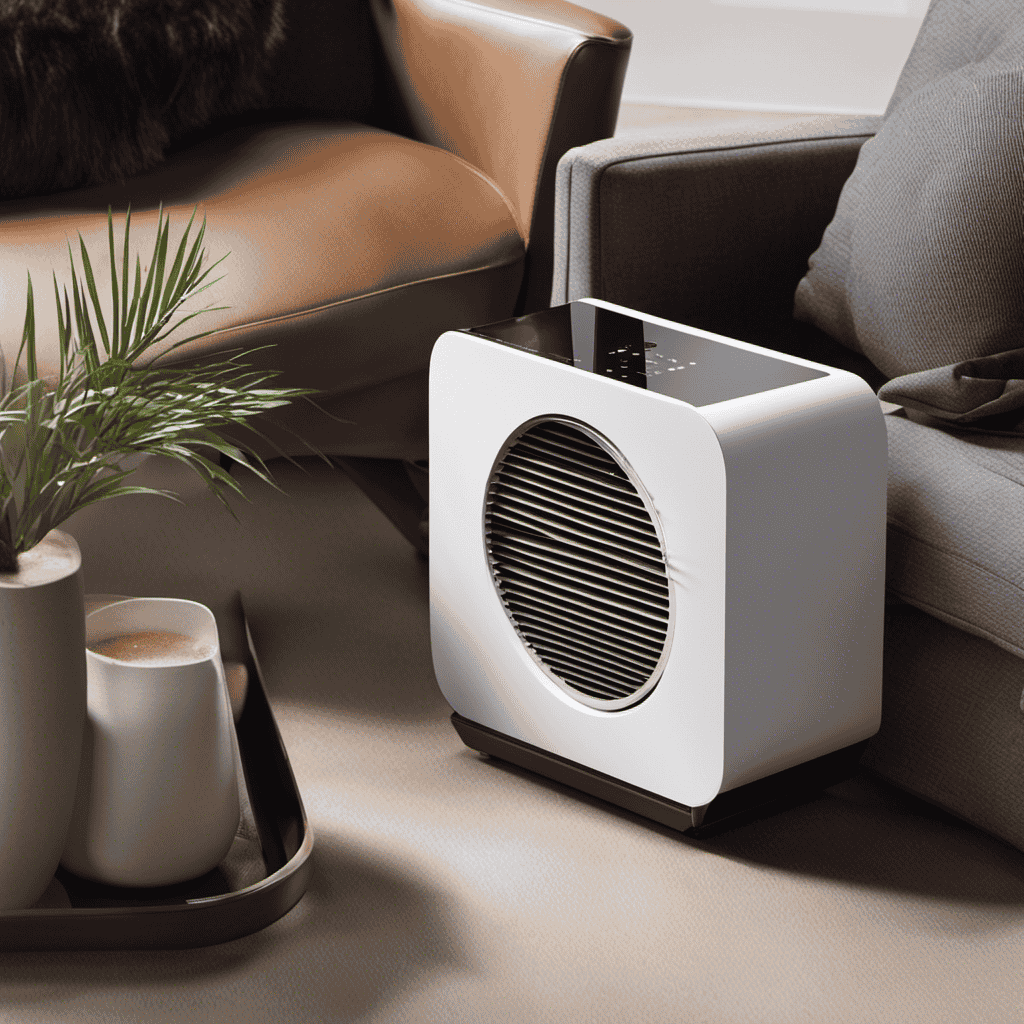
 Air Purifier Guides8 months ago
Air Purifier Guides8 months agoHow to Reset Filter on Miko Air Purifier
-
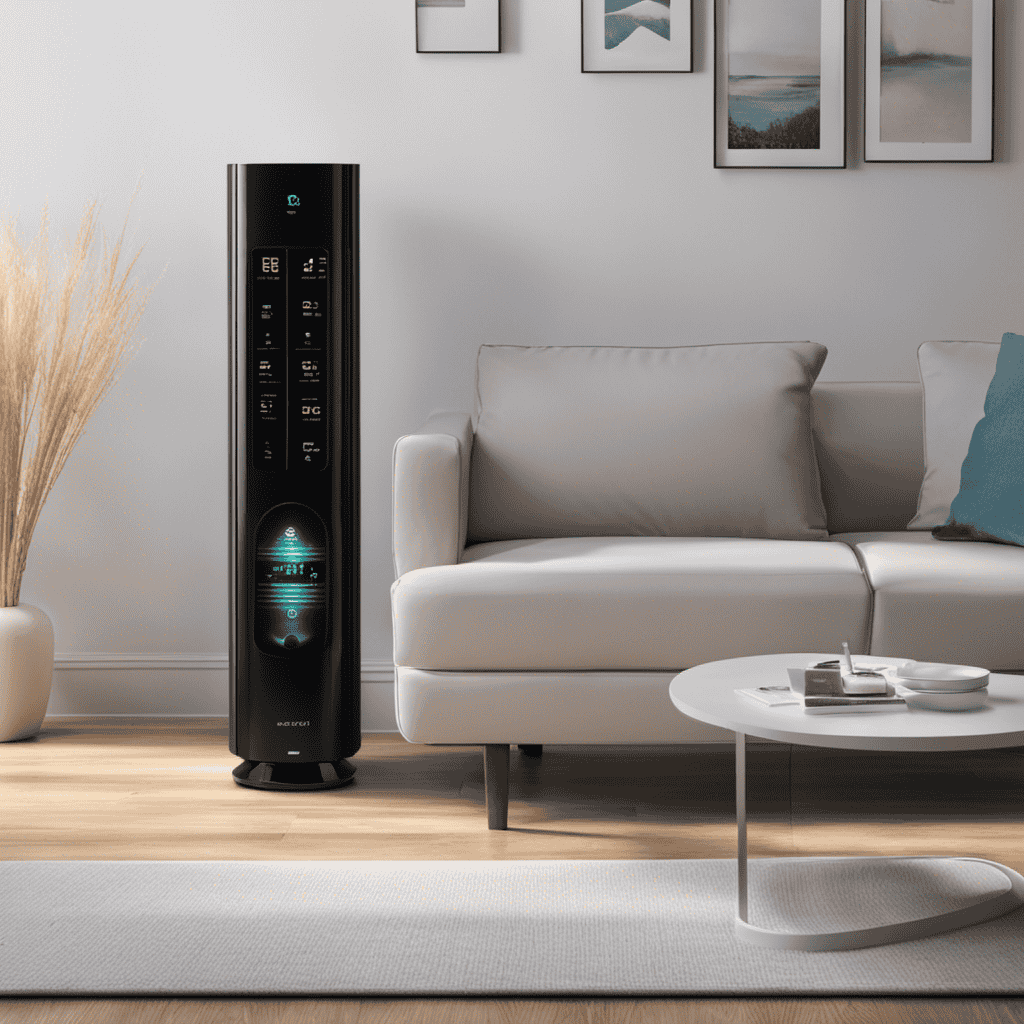
 FAQs - Advanced Queries6 months ago
FAQs - Advanced Queries6 months agoWhat Do the Numbers on My Air Purifier Mean
-
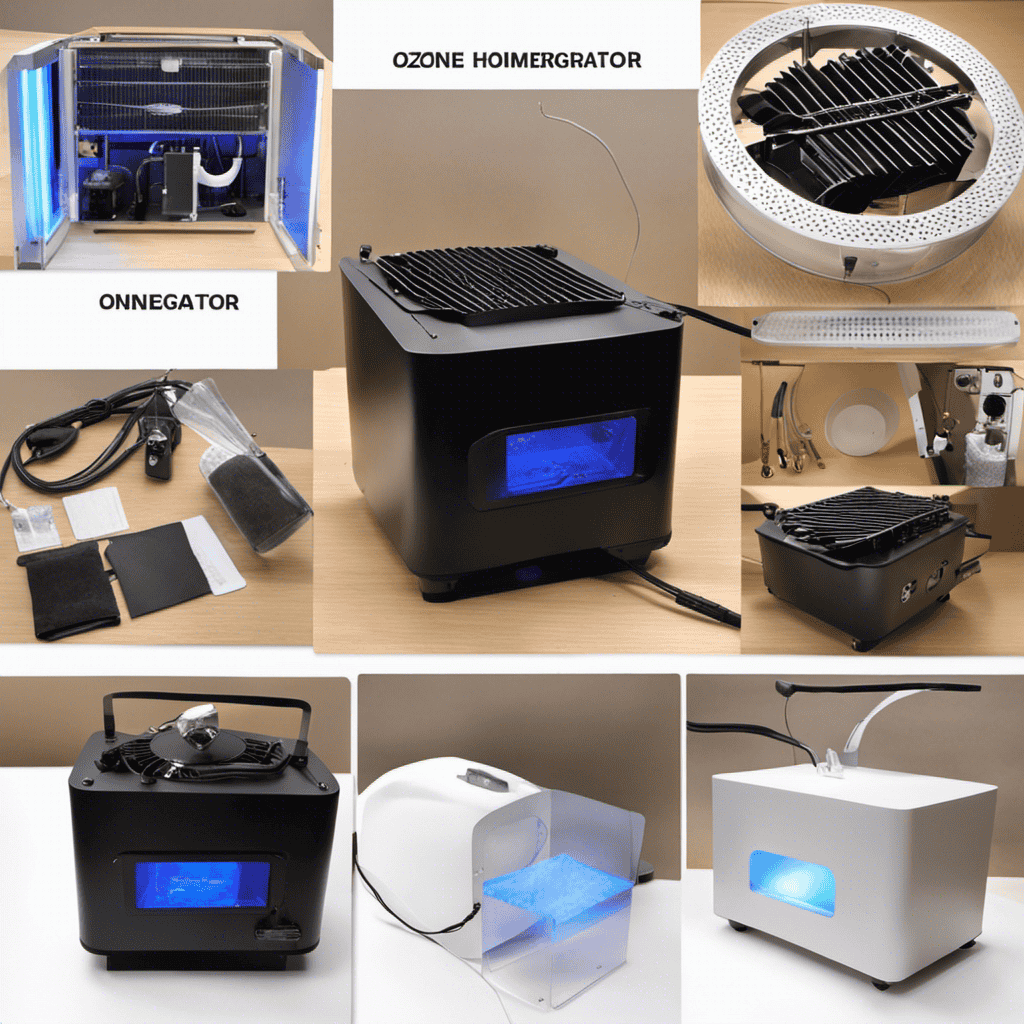
 Air Purifier Guides6 months ago
Air Purifier Guides6 months agoHow to Make a Homemade Ozone Generator (Air Purifier
-
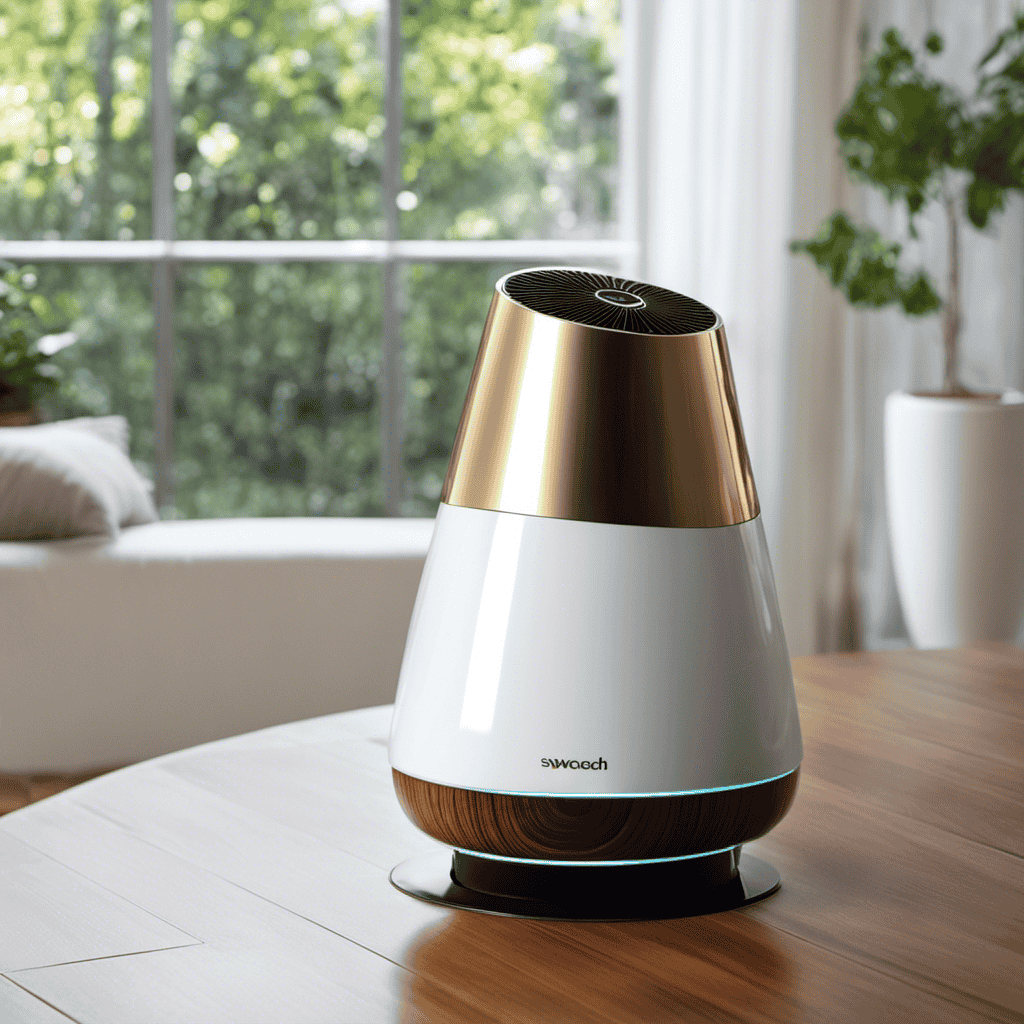
 Types of Air Purifiers9 months ago
Types of Air Purifiers9 months agoWhat Is an Air Purifier
-
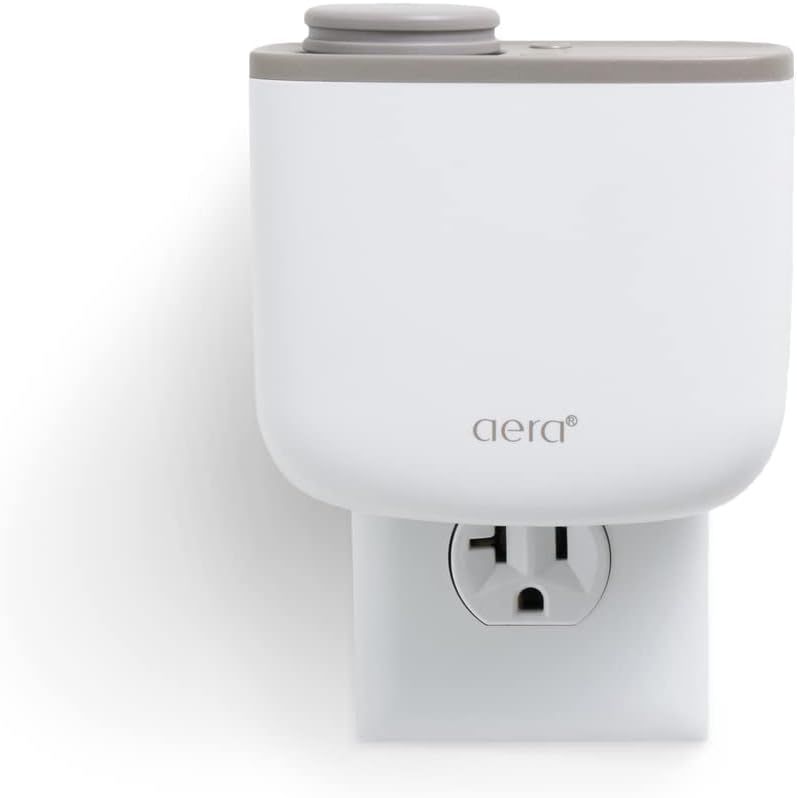
 Vetted7 months ago
Vetted7 months agoAera Mini Review: Smart Home Fragrance Diffuser With Hypoallergenic Scent Technology (2023)
-
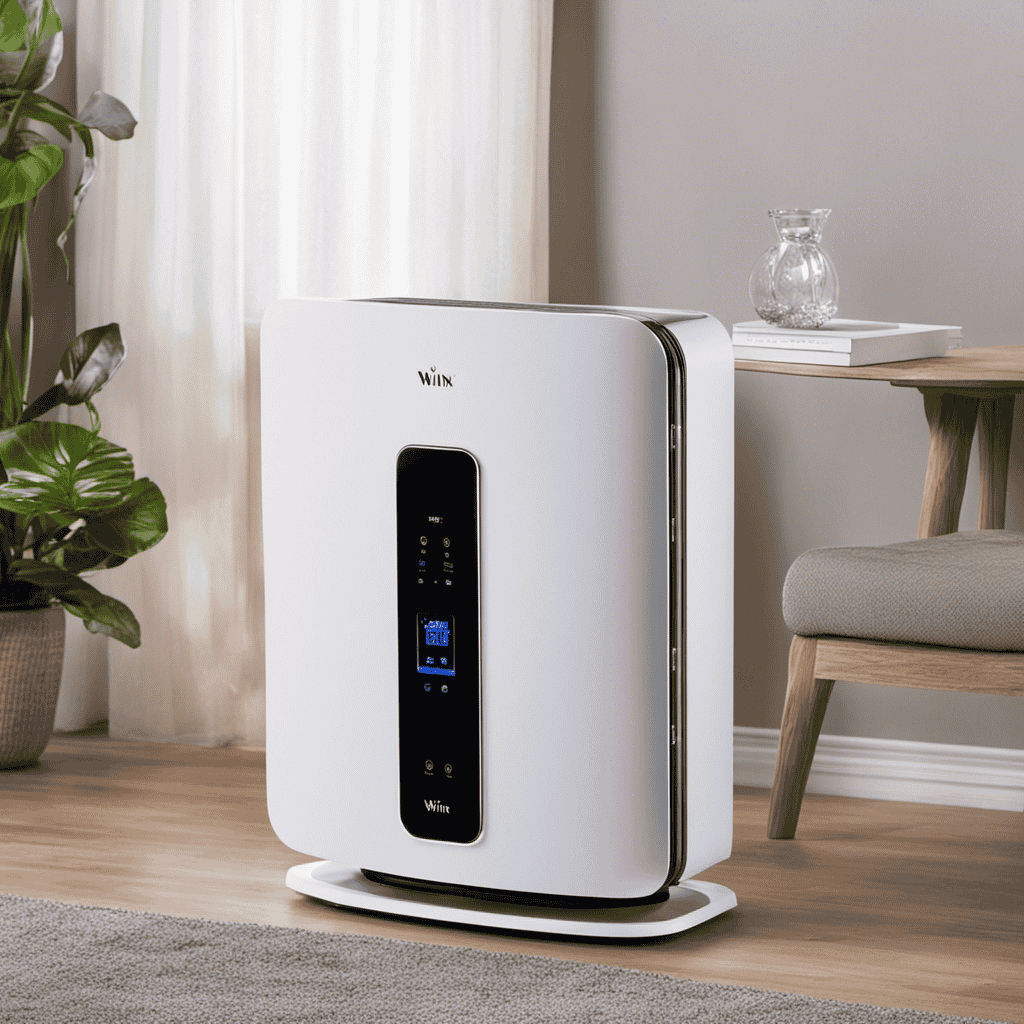
 Maintenance and Tips10 months ago
Maintenance and Tips10 months agoHow to Reset Filter Light on Winix Plasmawave Air Purifier
-
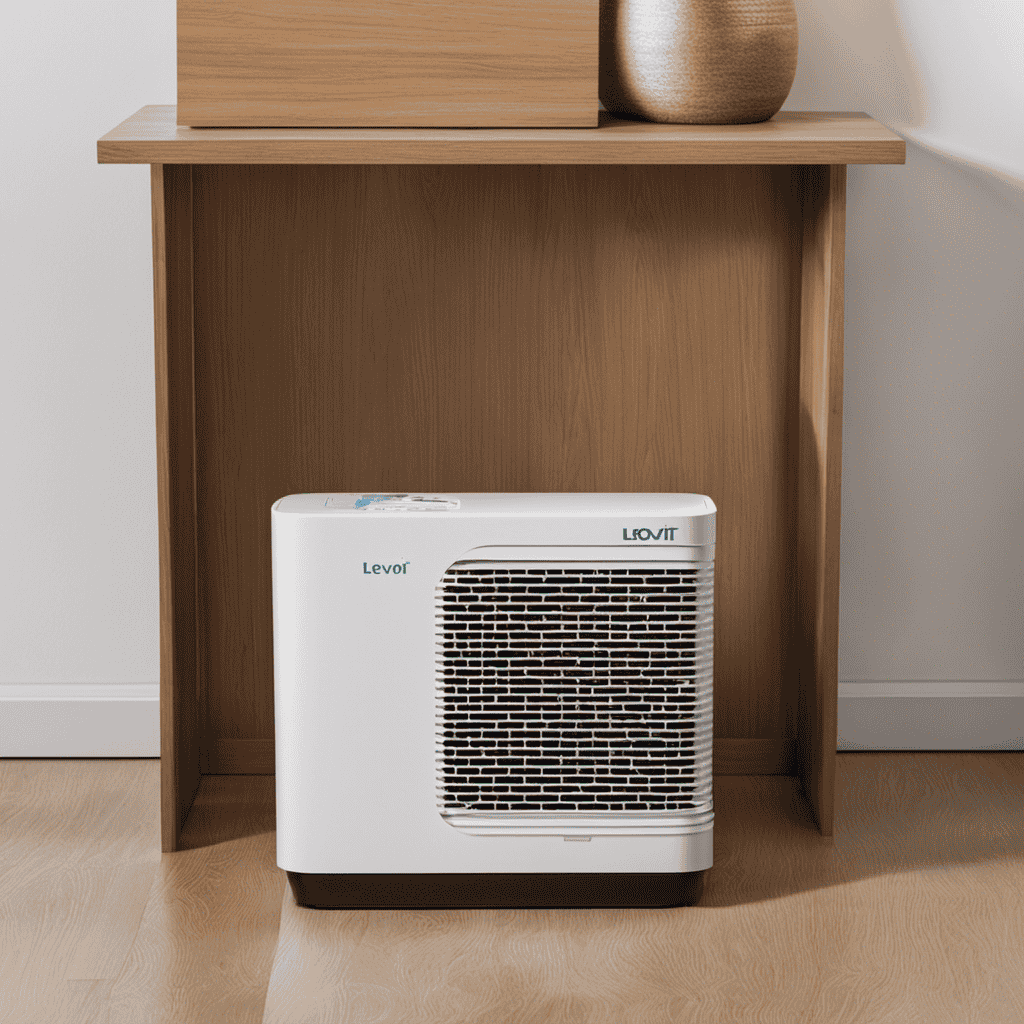
 Air Purifier Guides2 weeks ago
Air Purifier Guides2 weeks agoHow to Dispose of Air Purifier Filter Levoit
-
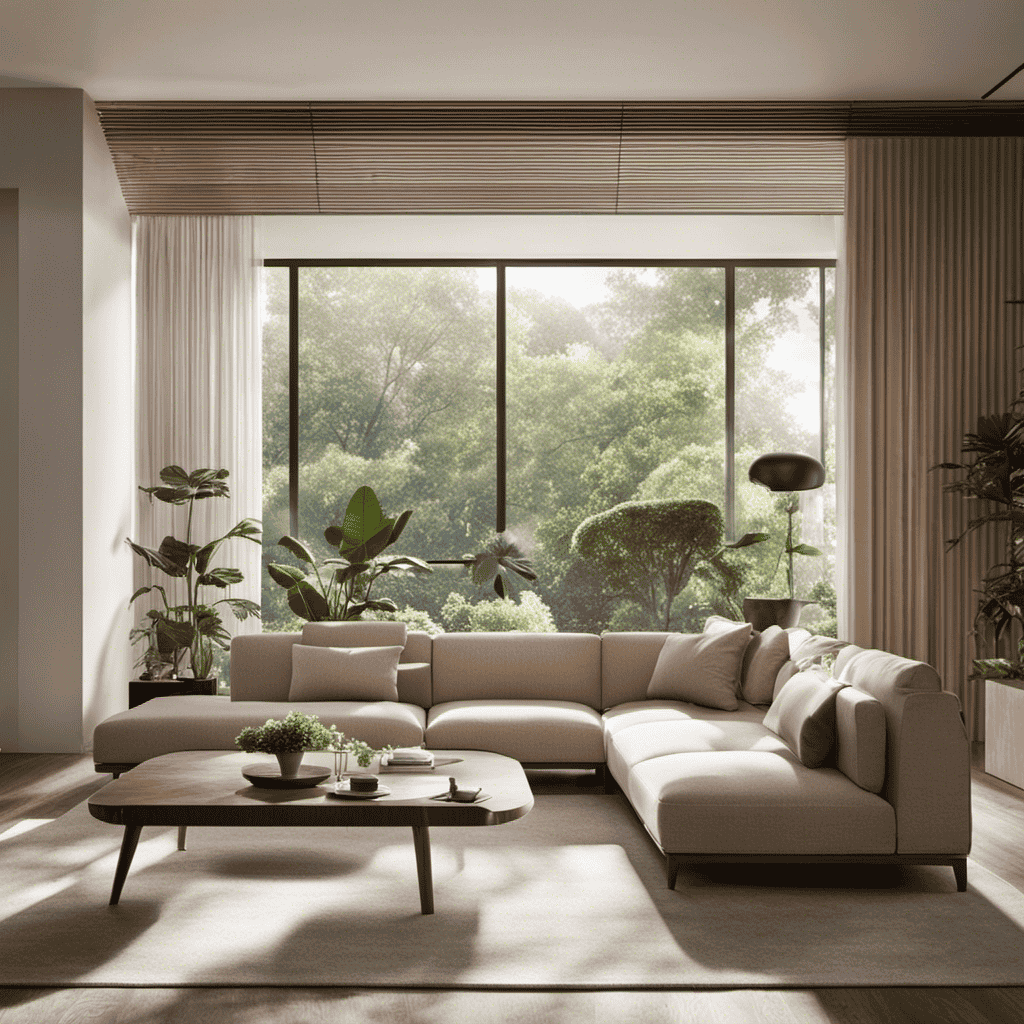
 FAQs - Advanced Queries4 weeks ago
FAQs - Advanced Queries4 weeks agoWhen to Use Ionizer on Coway Air Purifier





